Quick filters:
Hari hara Stock Photos and Images
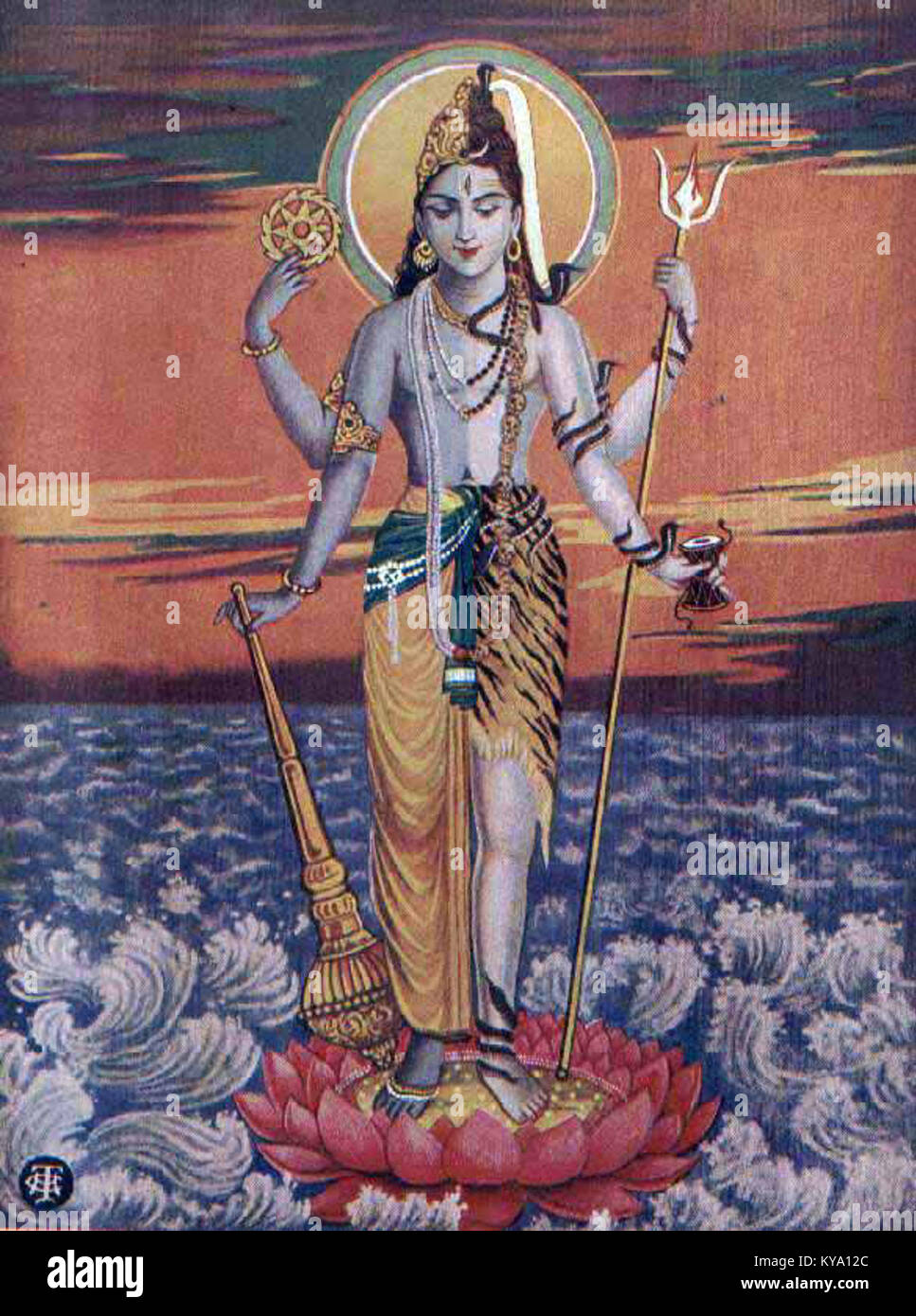 Vishnu and Shiva in a combined form, as 'Hari-hara,' Stock Photohttps://www.alamy.com/image-license-details/?v=1https://www.alamy.com/stock-photo-vishnu-and-shiva-in-a-combined-form-as-hari-hara-171709396.html
Vishnu and Shiva in a combined form, as 'Hari-hara,' Stock Photohttps://www.alamy.com/image-license-details/?v=1https://www.alamy.com/stock-photo-vishnu-and-shiva-in-a-combined-form-as-hari-hara-171709396.htmlRMKYA12C–Vishnu and Shiva in a combined form, as 'Hari-hara,'
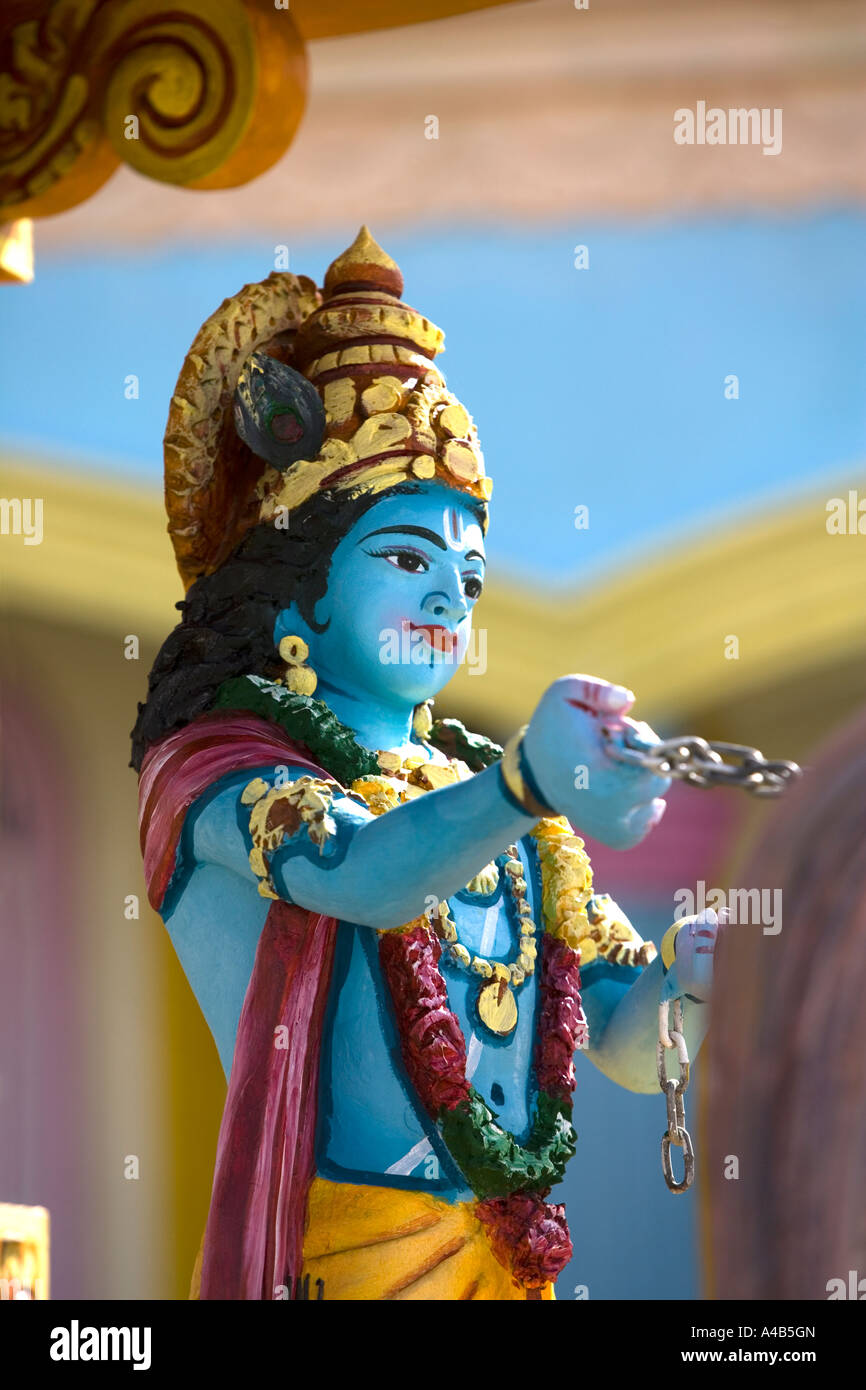 Hari Hara Tamil Temple with Krishna in chariot - Mauritius Stock Photohttps://www.alamy.com/image-license-details/?v=1https://www.alamy.com/stock-photo-hari-hara-tamil-temple-with-krishna-in-chariot-mauritius-10993556.html
Hari Hara Tamil Temple with Krishna in chariot - Mauritius Stock Photohttps://www.alamy.com/image-license-details/?v=1https://www.alamy.com/stock-photo-hari-hara-tamil-temple-with-krishna-in-chariot-mauritius-10993556.htmlRMA4B5GN–Hari Hara Tamil Temple with Krishna in chariot - Mauritius
 Hari hara 4th century classical Indian Hari hara. Sandstone Vidisa Madhya Pradesh. National Museum of New Delhi India l.672 Stock Photohttps://www.alamy.com/image-license-details/?v=1https://www.alamy.com/stock-photo-hari-hara-4th-century-classical-indian-hari-hara-sandstone-vidisa-20814621.html
Hari hara 4th century classical Indian Hari hara. Sandstone Vidisa Madhya Pradesh. National Museum of New Delhi India l.672 Stock Photohttps://www.alamy.com/image-license-details/?v=1https://www.alamy.com/stock-photo-hari-hara-4th-century-classical-indian-hari-hara-sandstone-vidisa-20814621.htmlRMB5T579–Hari hara 4th century classical Indian Hari hara. Sandstone Vidisa Madhya Pradesh. National Museum of New Delhi India l.672
 Standing Hari-Hara, pre-Angkor period, first half of the 8th century, Vietnam or Cambodia, Stone, H. 36 in. (91.4 cm), Sculpture Stock Photohttps://www.alamy.com/image-license-details/?v=1https://www.alamy.com/stock-image-standing-hari-hara-pre-angkor-period-first-half-of-the-8th-century-162350950.html
Standing Hari-Hara, pre-Angkor period, first half of the 8th century, Vietnam or Cambodia, Stone, H. 36 in. (91.4 cm), Sculpture Stock Photohttps://www.alamy.com/image-license-details/?v=1https://www.alamy.com/stock-image-standing-hari-hara-pre-angkor-period-first-half-of-the-8th-century-162350950.htmlRMKC3M86–Standing Hari-Hara, pre-Angkor period, first half of the 8th century, Vietnam or Cambodia, Stone, H. 36 in. (91.4 cm), Sculpture
 Standing Hari-Hara, from 10th century found in Basalt Surajkund, Nalanda, Bihar now exposed in the Indian Museum in Kolkata Stock Photohttps://www.alamy.com/image-license-details/?v=1https://www.alamy.com/stock-photo-standing-hari-hara-from-10th-century-found-in-basalt-surajkund-nalanda-77527651.html
Standing Hari-Hara, from 10th century found in Basalt Surajkund, Nalanda, Bihar now exposed in the Indian Museum in Kolkata Stock Photohttps://www.alamy.com/image-license-details/?v=1https://www.alamy.com/stock-photo-standing-hari-hara-from-10th-century-found-in-basalt-surajkund-nalanda-77527651.htmlRFEE3K8K–Standing Hari-Hara, from 10th century found in Basalt Surajkund, Nalanda, Bihar now exposed in the Indian Museum in Kolkata
 Hari-Hara, 1800s. India, Calcutta, Kalighat painting, 19th century. Black ink, color and silver paint on paper; secondary support: 49.9 x 29.8 cm (19 5/8 x 11 3/4 in.); painting only: 45.5 x 28.2 cm (17 15/16 x 11 1/8 in Stock Photohttps://www.alamy.com/image-license-details/?v=1https://www.alamy.com/hari-hara-1800s-india-calcutta-kalighat-painting-19th-century-black-ink-color-and-silver-paint-on-paper-secondary-support-499-x-298-cm-19-58-x-11-34-in-painting-only-455-x-282-cm-17-1516-x-11-18-in-image240477631.html
Hari-Hara, 1800s. India, Calcutta, Kalighat painting, 19th century. Black ink, color and silver paint on paper; secondary support: 49.9 x 29.8 cm (19 5/8 x 11 3/4 in.); painting only: 45.5 x 28.2 cm (17 15/16 x 11 1/8 in Stock Photohttps://www.alamy.com/image-license-details/?v=1https://www.alamy.com/hari-hara-1800s-india-calcutta-kalighat-painting-19th-century-black-ink-color-and-silver-paint-on-paper-secondary-support-499-x-298-cm-19-58-x-11-34-in-painting-only-455-x-282-cm-17-1516-x-11-18-in-image240477631.htmlRMRY6KJR–Hari-Hara, 1800s. India, Calcutta, Kalighat painting, 19th century. Black ink, color and silver paint on paper; secondary support: 49.9 x 29.8 cm (19 5/8 x 11 3/4 in.); painting only: 45.5 x 28.2 cm (17 15/16 x 11 1/8 in
 Art inspired by Standing Hari-Hara, pre-Angkor period, first half of the 8th century, Vietnam or Cambodia, Stone, H. 36 in. (91.4 cm), Sculpture, Classic works modernized by Artotop with a splash of modernity. Shapes, color and value, eye-catching visual impact on art. Emotions through freedom of artworks in a contemporary way. A timeless message pursuing a wildly creative new direction. Artists turning to the digital medium and creating the Artotop NFT Stock Photohttps://www.alamy.com/image-license-details/?v=1https://www.alamy.com/art-inspired-by-standing-hari-hara-pre-angkor-period-first-half-of-the-8th-century-vietnam-or-cambodia-stone-h-36-in-914-cm-sculpture-classic-works-modernized-by-artotop-with-a-splash-of-modernity-shapes-color-and-value-eye-catching-visual-impact-on-art-emotions-through-freedom-of-artworks-in-a-contemporary-way-a-timeless-message-pursuing-a-wildly-creative-new-direction-artists-turning-to-the-digital-medium-and-creating-the-artotop-nft-image462757742.html
Art inspired by Standing Hari-Hara, pre-Angkor period, first half of the 8th century, Vietnam or Cambodia, Stone, H. 36 in. (91.4 cm), Sculpture, Classic works modernized by Artotop with a splash of modernity. Shapes, color and value, eye-catching visual impact on art. Emotions through freedom of artworks in a contemporary way. A timeless message pursuing a wildly creative new direction. Artists turning to the digital medium and creating the Artotop NFT Stock Photohttps://www.alamy.com/image-license-details/?v=1https://www.alamy.com/art-inspired-by-standing-hari-hara-pre-angkor-period-first-half-of-the-8th-century-vietnam-or-cambodia-stone-h-36-in-914-cm-sculpture-classic-works-modernized-by-artotop-with-a-splash-of-modernity-shapes-color-and-value-eye-catching-visual-impact-on-art-emotions-through-freedom-of-artworks-in-a-contemporary-way-a-timeless-message-pursuing-a-wildly-creative-new-direction-artists-turning-to-the-digital-medium-and-creating-the-artotop-nft-image462757742.htmlRF2HTTC66–Art inspired by Standing Hari-Hara, pre-Angkor period, first half of the 8th century, Vietnam or Cambodia, Stone, H. 36 in. (91.4 cm), Sculpture, Classic works modernized by Artotop with a splash of modernity. Shapes, color and value, eye-catching visual impact on art. Emotions through freedom of artworks in a contemporary way. A timeless message pursuing a wildly creative new direction. Artists turning to the digital medium and creating the Artotop NFT
 Hari-Hara, Shiva-Vishnu relief, Pattadakal, south India Stock Photohttps://www.alamy.com/image-license-details/?v=1https://www.alamy.com/stock-photo-hari-hara-shiva-vishnu-relief-pattadakal-south-india-74823840.html
Hari-Hara, Shiva-Vishnu relief, Pattadakal, south India Stock Photohttps://www.alamy.com/image-license-details/?v=1https://www.alamy.com/stock-photo-hari-hara-shiva-vishnu-relief-pattadakal-south-india-74823840.htmlRME9MEG0–Hari-Hara, Shiva-Vishnu relief, Pattadakal, south India
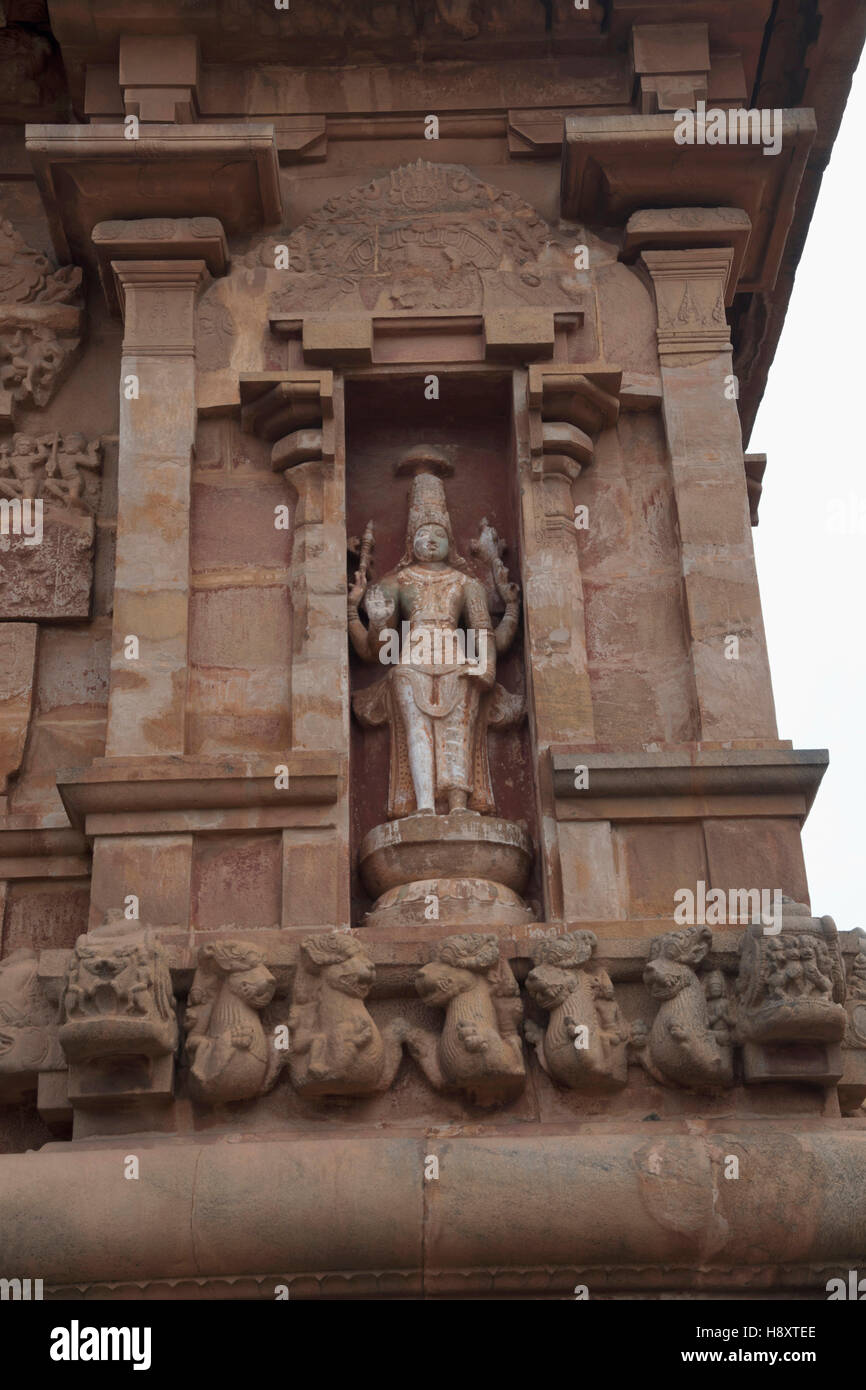 Hari-Hara, western niche, Brihadisvara Temple, Tanjore, Tamil Nadu, India. Stock Photohttps://www.alamy.com/image-license-details/?v=1https://www.alamy.com/stock-photo-hari-hara-western-niche-brihadisvara-temple-tanjore-tamil-nadu-india-125979798.html
Hari-Hara, western niche, Brihadisvara Temple, Tanjore, Tamil Nadu, India. Stock Photohttps://www.alamy.com/image-license-details/?v=1https://www.alamy.com/stock-photo-hari-hara-western-niche-brihadisvara-temple-tanjore-tamil-nadu-india-125979798.htmlRFH8XTEE–Hari-Hara, western niche, Brihadisvara Temple, Tanjore, Tamil Nadu, India.
 Kalighat Hari Hara Stock Photohttps://www.alamy.com/image-license-details/?v=1https://www.alamy.com/stock-photo-kalighat-hari-hara-140058155.html
Kalighat Hari Hara Stock Photohttps://www.alamy.com/image-license-details/?v=1https://www.alamy.com/stock-photo-kalighat-hari-hara-140058155.htmlRMJ3T5GY–Kalighat Hari Hara
 333 Kalighat Hari-Hara Stock Photohttps://www.alamy.com/image-license-details/?v=1https://www.alamy.com/333-kalighat-hari-hara-image214074437.html
333 Kalighat Hari-Hara Stock Photohttps://www.alamy.com/image-license-details/?v=1https://www.alamy.com/333-kalighat-hari-hara-image214074437.htmlRMPC7X3H–333 Kalighat Hari-Hara
 Bas relief statue of Harihara, 6th Century Badami temple caves , Karnataka , India Stock Photohttps://www.alamy.com/image-license-details/?v=1https://www.alamy.com/stock-photo-bas-relief-statue-of-harihara-6th-century-badami-temple-caves-karnataka-18361276.html
Bas relief statue of Harihara, 6th Century Badami temple caves , Karnataka , India Stock Photohttps://www.alamy.com/image-license-details/?v=1https://www.alamy.com/stock-photo-bas-relief-statue-of-harihara-6th-century-badami-temple-caves-karnataka-18361276.htmlRMB1TBYT–Bas relief statue of Harihara, 6th Century Badami temple caves , Karnataka , India
 Kalighat Hari-Hara. Stock Photohttps://www.alamy.com/image-license-details/?v=1https://www.alamy.com/kalighat-hari-hara-image384191013.html
Kalighat Hari-Hara. Stock Photohttps://www.alamy.com/image-license-details/?v=1https://www.alamy.com/kalighat-hari-hara-image384191013.htmlRM2D91BFH–Kalighat Hari-Hara.
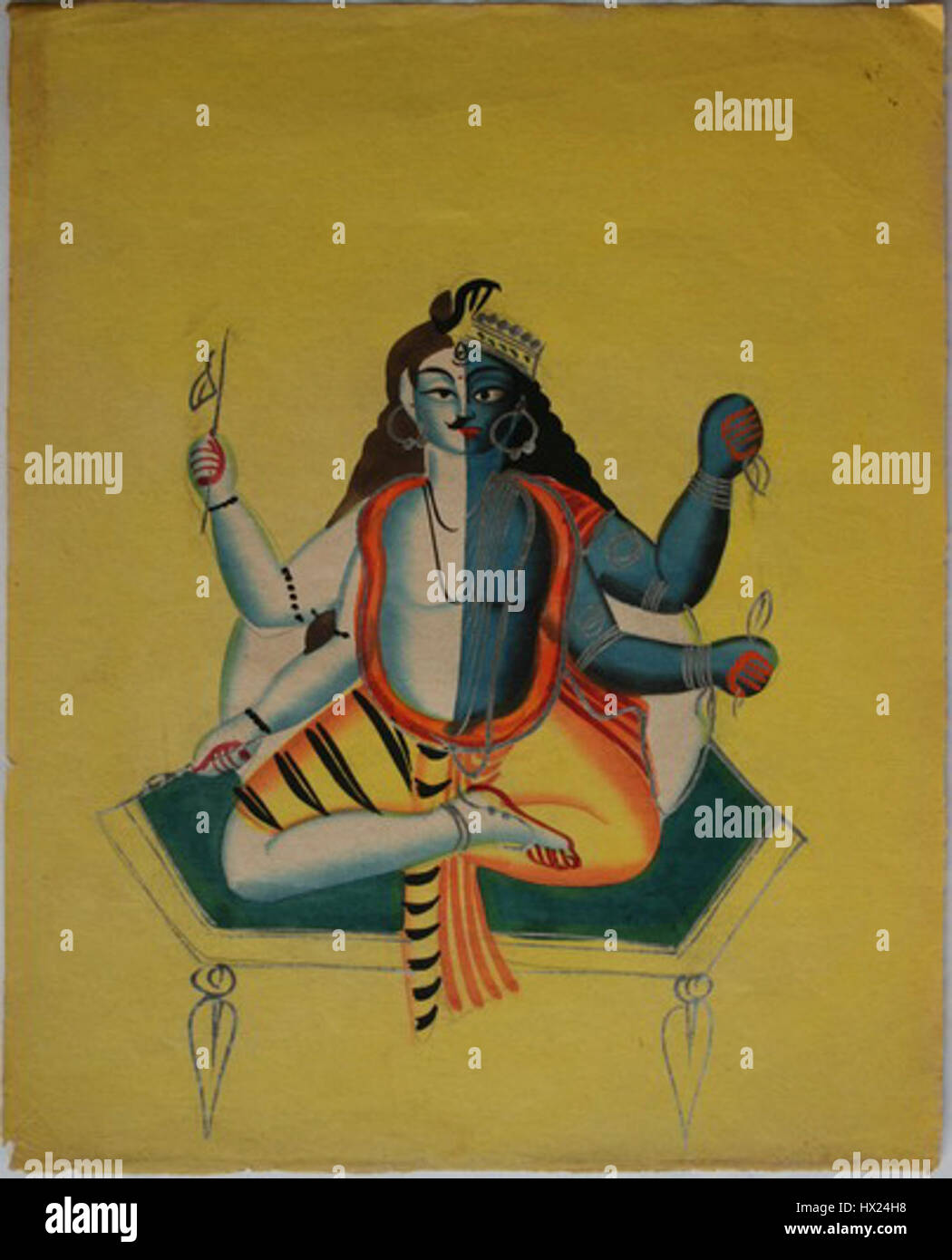 Kalighat Hari Hara Stock Photohttps://www.alamy.com/image-license-details/?v=1https://www.alamy.com/stock-photo-kalighat-hari-hara-136501156.html
Kalighat Hari Hara Stock Photohttps://www.alamy.com/image-license-details/?v=1https://www.alamy.com/stock-photo-kalighat-hari-hara-136501156.htmlRMHX24H8–Kalighat Hari Hara
 Shankaranarayana, a form of Hari-Hara Stock Photohttps://www.alamy.com/image-license-details/?v=1https://www.alamy.com/shankaranarayana-a-form-of-hari-hara-image446713390.html
Shankaranarayana, a form of Hari-Hara Stock Photohttps://www.alamy.com/image-license-details/?v=1https://www.alamy.com/shankaranarayana-a-form-of-hari-hara-image446713390.htmlRM2GXNFDJ–Shankaranarayana, a form of Hari-Hara
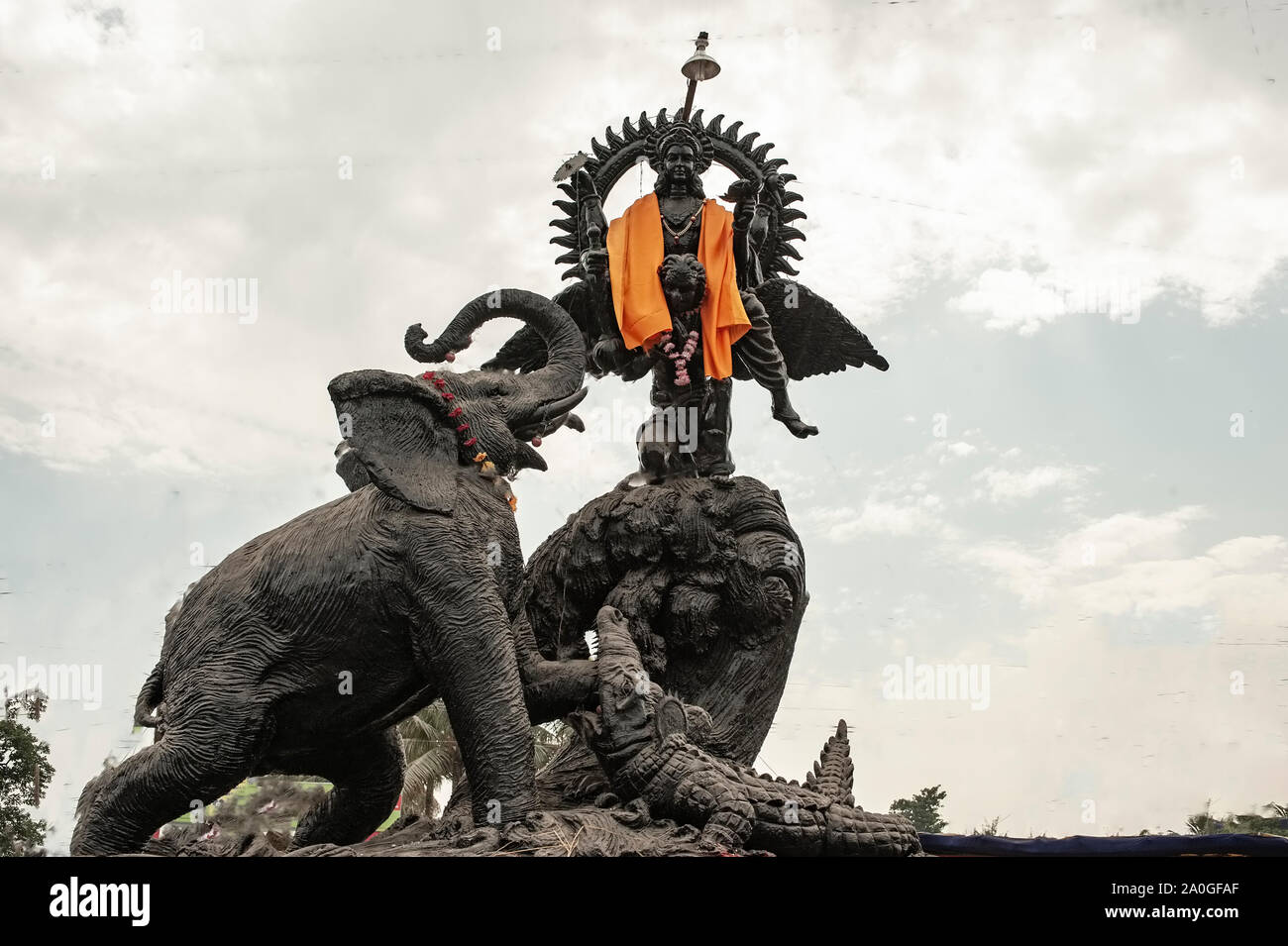 Idol,of,Gods,Hari -Hara,the elephant,and Crocodile ,Fight,at Sonepur Fair,Chhapra,Bihar,India. Stock Photohttps://www.alamy.com/image-license-details/?v=1https://www.alamy.com/idolofgodshari-harathe-elephantand-crocodile-fightat-sonepur-fairchhaprabiharindia-image327360279.html
Idol,of,Gods,Hari -Hara,the elephant,and Crocodile ,Fight,at Sonepur Fair,Chhapra,Bihar,India. Stock Photohttps://www.alamy.com/image-license-details/?v=1https://www.alamy.com/idolofgodshari-harathe-elephantand-crocodile-fightat-sonepur-fairchhaprabiharindia-image327360279.htmlRM2A0GFAF–Idol,of,Gods,Hari -Hara,the elephant,and Crocodile ,Fight,at Sonepur Fair,Chhapra,Bihar,India.
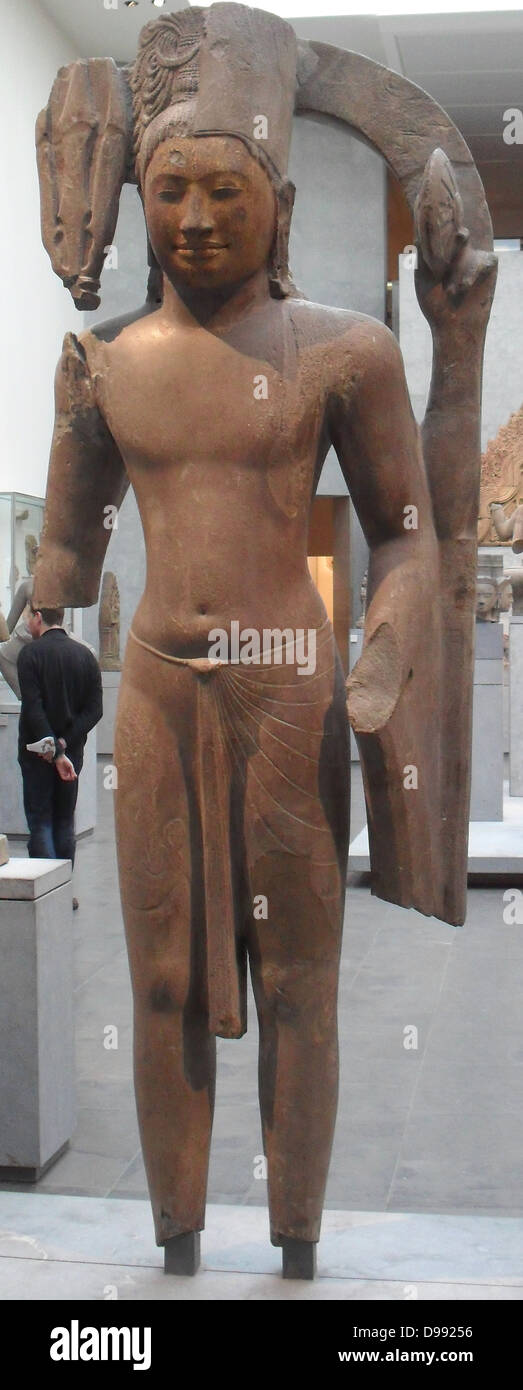 Harihara. Composite half Vishnu (Hari) and half Shiva (Hara). Hari means 'yellow' color beneficial draped Krishna, incarnation of Vishnu, while Hara means 'destroyer. ' 6th - 7th century, Phnom Da style sandstone sculpture from Asram Maha Rosei (sanctuary), Cambodia Stock Photohttps://www.alamy.com/image-license-details/?v=1https://www.alamy.com/stock-photo-harihara-composite-half-vishnu-hari-and-half-shiva-hara-hari-means-57362290.html
Harihara. Composite half Vishnu (Hari) and half Shiva (Hara). Hari means 'yellow' color beneficial draped Krishna, incarnation of Vishnu, while Hara means 'destroyer. ' 6th - 7th century, Phnom Da style sandstone sculpture from Asram Maha Rosei (sanctuary), Cambodia Stock Photohttps://www.alamy.com/image-license-details/?v=1https://www.alamy.com/stock-photo-harihara-composite-half-vishnu-hari-and-half-shiva-hara-hari-means-57362290.htmlRMD99256–Harihara. Composite half Vishnu (Hari) and half Shiva (Hara). Hari means 'yellow' color beneficial draped Krishna, incarnation of Vishnu, while Hara means 'destroyer. ' 6th - 7th century, Phnom Da style sandstone sculpture from Asram Maha Rosei (sanctuary), Cambodia
 Shankaranarayana or Hari-Hara, Shiva and Vishnu joined into one Stock Photohttps://www.alamy.com/image-license-details/?v=1https://www.alamy.com/shankaranarayana-or-hari-hara-shiva-and-vishnu-joined-into-one-image469566168.html
Shankaranarayana or Hari-Hara, Shiva and Vishnu joined into one Stock Photohttps://www.alamy.com/image-license-details/?v=1https://www.alamy.com/shankaranarayana-or-hari-hara-shiva-and-vishnu-joined-into-one-image469566168.htmlRM2J7XGC8–Shankaranarayana or Hari-Hara, Shiva and Vishnu joined into one
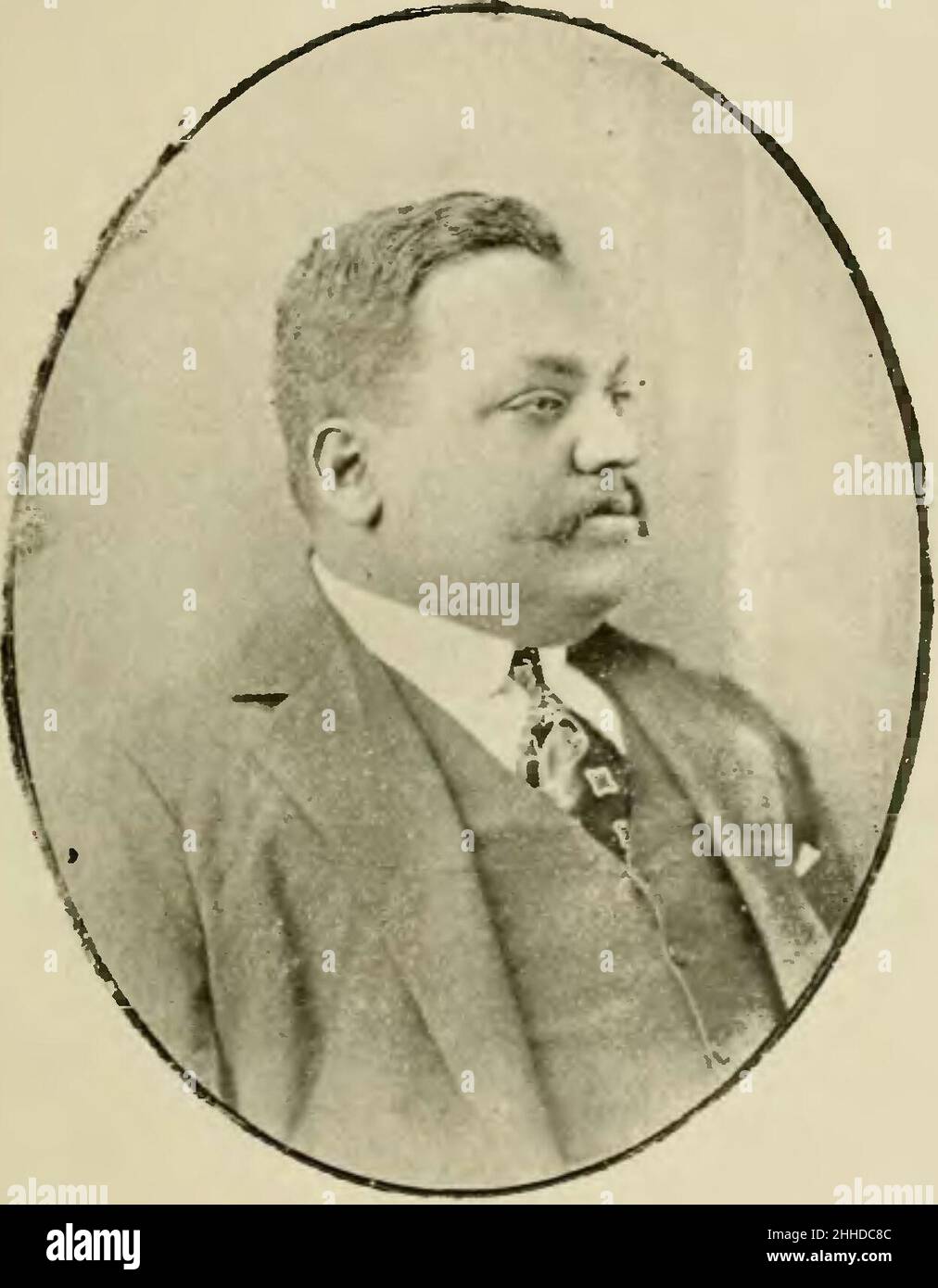 Sri Hari Hara Marda Rajah Deo Bahadur Rajah of Kallikote and Atagada. Stock Photohttps://www.alamy.com/image-license-details/?v=1https://www.alamy.com/sri-hari-hara-marda-rajah-deo-bahadur-rajah-of-kallikote-and-atagada-image458213740.html
Sri Hari Hara Marda Rajah Deo Bahadur Rajah of Kallikote and Atagada. Stock Photohttps://www.alamy.com/image-license-details/?v=1https://www.alamy.com/sri-hari-hara-marda-rajah-deo-bahadur-rajah-of-kallikote-and-atagada-image458213740.htmlRM2HHDC8C–Sri Hari Hara Marda Rajah Deo Bahadur Rajah of Kallikote and Atagada.
 Standing Hari-Hara first half of the 8th century Vietnam or Cambodia. Standing Hari-Hara 38617 Stock Photohttps://www.alamy.com/image-license-details/?v=1https://www.alamy.com/standing-hari-hara-first-half-of-the-8th-century-vietnam-or-cambodia-standing-hari-hara-38617-image458610683.html
Standing Hari-Hara first half of the 8th century Vietnam or Cambodia. Standing Hari-Hara 38617 Stock Photohttps://www.alamy.com/image-license-details/?v=1https://www.alamy.com/standing-hari-hara-first-half-of-the-8th-century-vietnam-or-cambodia-standing-hari-hara-38617-image458610683.htmlRM2HJ3EGY–Standing Hari-Hara first half of the 8th century Vietnam or Cambodia. Standing Hari-Hara 38617
![[^Hari ^Hara ^Tamil ^Temple] with ^Karnam in ^chariot - 'Mauritius' Stock Photo [^Hari ^Hara ^Tamil ^Temple] with ^Karnam in ^chariot - 'Mauritius' Stock Photo](https://c8.alamy.com/comp/A4B5GM/hari-hara-tamil-temple-with-karnam-in-chariot-mauritius-A4B5GM.jpg) [^Hari ^Hara ^Tamil ^Temple] with ^Karnam in ^chariot - 'Mauritius' Stock Photohttps://www.alamy.com/image-license-details/?v=1https://www.alamy.com/stock-photo-hari-hara-tamil-temple-with-karnam-in-chariot-mauritius-10993555.html
[^Hari ^Hara ^Tamil ^Temple] with ^Karnam in ^chariot - 'Mauritius' Stock Photohttps://www.alamy.com/image-license-details/?v=1https://www.alamy.com/stock-photo-hari-hara-tamil-temple-with-karnam-in-chariot-mauritius-10993555.htmlRMA4B5GM–[^Hari ^Hara ^Tamil ^Temple] with ^Karnam in ^chariot - 'Mauritius'
 Vintage Hindu Art. Hari-Hara ; Vasudeva (Krishna's Father) Fleeing with Krishna Encounters a Cobra and a Jackal (verso), c. 1890. Eastern India, Bengal, Kolkata, Kalighat. Stock Photohttps://www.alamy.com/image-license-details/?v=1https://www.alamy.com/vintage-hindu-art-hari-hara-vasudeva-krishnas-father-fleeing-with-krishna-encounters-a-cobra-and-a-jackal-verso-c-1890-eastern-india-bengal-kolkata-kalighat-image600613179.html
Vintage Hindu Art. Hari-Hara ; Vasudeva (Krishna's Father) Fleeing with Krishna Encounters a Cobra and a Jackal (verso), c. 1890. Eastern India, Bengal, Kolkata, Kalighat. Stock Photohttps://www.alamy.com/image-license-details/?v=1https://www.alamy.com/vintage-hindu-art-hari-hara-vasudeva-krishnas-father-fleeing-with-krishna-encounters-a-cobra-and-a-jackal-verso-c-1890-eastern-india-bengal-kolkata-kalighat-image600613179.htmlRM2WW486K–Vintage Hindu Art. Hari-Hara ; Vasudeva (Krishna's Father) Fleeing with Krishna Encounters a Cobra and a Jackal (verso), c. 1890. Eastern India, Bengal, Kolkata, Kalighat.
 Hari-Hara, c. 1890. Eastern India, Bengal, Kolkata, Kalighat. Watercolor, graphite, ink, and tin on paper; secondary support: 46.5 x 28.3 cm (18 5/16 x 11 1/8 in.); painting only: 45.2 x 27.8 cm (17 13/16 x 10 15/16 in.). Stock Photohttps://www.alamy.com/image-license-details/?v=1https://www.alamy.com/hari-hara-c-1890-eastern-india-bengal-kolkata-kalighat-watercolor-graphite-ink-and-tin-on-paper-secondary-support-465-x-283-cm-18-516-x-11-18-in-painting-only-452-x-278-cm-17-1316-x-10-1516-in-image448065297.html
Hari-Hara, c. 1890. Eastern India, Bengal, Kolkata, Kalighat. Watercolor, graphite, ink, and tin on paper; secondary support: 46.5 x 28.3 cm (18 5/16 x 11 1/8 in.); painting only: 45.2 x 27.8 cm (17 13/16 x 10 15/16 in.). Stock Photohttps://www.alamy.com/image-license-details/?v=1https://www.alamy.com/hari-hara-c-1890-eastern-india-bengal-kolkata-kalighat-watercolor-graphite-ink-and-tin-on-paper-secondary-support-465-x-283-cm-18-516-x-11-18-in-painting-only-452-x-278-cm-17-1316-x-10-1516-in-image448065297.htmlRM2H0Y3T1–Hari-Hara, c. 1890. Eastern India, Bengal, Kolkata, Kalighat. Watercolor, graphite, ink, and tin on paper; secondary support: 46.5 x 28.3 cm (18 5/16 x 11 1/8 in.); painting only: 45.2 x 27.8 cm (17 13/16 x 10 15/16 in.).
 Standing Hari-Hara, from 10th century found in Basalt Surajkund, Nalanda, Bihar now exposed in the Indian Museum in Kolkata, on Stock Photohttps://www.alamy.com/image-license-details/?v=1https://www.alamy.com/stock-photo-standing-hari-hara-from-10th-century-found-in-basalt-surajkund-nalanda-77527292.html
Standing Hari-Hara, from 10th century found in Basalt Surajkund, Nalanda, Bihar now exposed in the Indian Museum in Kolkata, on Stock Photohttps://www.alamy.com/image-license-details/?v=1https://www.alamy.com/stock-photo-standing-hari-hara-from-10th-century-found-in-basalt-surajkund-nalanda-77527292.htmlRFEE3JRT–Standing Hari-Hara, from 10th century found in Basalt Surajkund, Nalanda, Bihar now exposed in the Indian Museum in Kolkata, on
 Hari-Hara, 1800s. India, Calcutta, Kalighat painting, 19th century. Black ink, color and silver paint, and graphite underdrawing on paper; secondary support: 46.5 x 28.3 cm (18 5/16 x 11 1/8 in.); painting only: 45.2 x 27.8 cm (17 13/16 x 10 15/16 in Stock Photohttps://www.alamy.com/image-license-details/?v=1https://www.alamy.com/hari-hara-1800s-india-calcutta-kalighat-painting-19th-century-black-ink-color-and-silver-paint-and-graphite-underdrawing-on-paper-secondary-support-465-x-283-cm-18-516-x-11-18-in-painting-only-452-x-278-cm-17-1316-x-10-1516-in-image240478002.html
Hari-Hara, 1800s. India, Calcutta, Kalighat painting, 19th century. Black ink, color and silver paint, and graphite underdrawing on paper; secondary support: 46.5 x 28.3 cm (18 5/16 x 11 1/8 in.); painting only: 45.2 x 27.8 cm (17 13/16 x 10 15/16 in Stock Photohttps://www.alamy.com/image-license-details/?v=1https://www.alamy.com/hari-hara-1800s-india-calcutta-kalighat-painting-19th-century-black-ink-color-and-silver-paint-and-graphite-underdrawing-on-paper-secondary-support-465-x-283-cm-18-516-x-11-18-in-painting-only-452-x-278-cm-17-1316-x-10-1516-in-image240478002.htmlRMRY6M42–Hari-Hara, 1800s. India, Calcutta, Kalighat painting, 19th century. Black ink, color and silver paint, and graphite underdrawing on paper; secondary support: 46.5 x 28.3 cm (18 5/16 x 11 1/8 in.); painting only: 45.2 x 27.8 cm (17 13/16 x 10 15/16 in
 Standing Hari-Hara, from 10th century found in Basalt Surajkund, Nalanda, Bihar now exposed in the Indian Museum in Kolkata Stock Photohttps://www.alamy.com/image-license-details/?v=1https://www.alamy.com/stock-photo-standing-hari-hara-from-10th-century-found-in-basalt-surajkund-nalanda-141542246.html
Standing Hari-Hara, from 10th century found in Basalt Surajkund, Nalanda, Bihar now exposed in the Indian Museum in Kolkata Stock Photohttps://www.alamy.com/image-license-details/?v=1https://www.alamy.com/stock-photo-standing-hari-hara-from-10th-century-found-in-basalt-surajkund-nalanda-141542246.htmlRFJ67PG6–Standing Hari-Hara, from 10th century found in Basalt Surajkund, Nalanda, Bihar now exposed in the Indian Museum in Kolkata
 Sukhothai Art: Bronze Hari-Hara, Gallery of Thai History, National Museum of Thailand, Bangkok Stock Photohttps://www.alamy.com/image-license-details/?v=1https://www.alamy.com/sukhothai-art-bronze-hari-hara-gallery-of-thai-history-national-museum-of-thailand-bangkok-image573378882.html
Sukhothai Art: Bronze Hari-Hara, Gallery of Thai History, National Museum of Thailand, Bangkok Stock Photohttps://www.alamy.com/image-license-details/?v=1https://www.alamy.com/sukhothai-art-bronze-hari-hara-gallery-of-thai-history-national-museum-of-thailand-bangkok-image573378882.htmlRM2T8RJH6–Sukhothai Art: Bronze Hari-Hara, Gallery of Thai History, National Museum of Thailand, Bangkok
 Hari-Hara (recto), c. 1890. Eastern India, Bengal, Kolkata, Kalighat. Watercolor, graphite, ink, and tin on paper; secondary support: 49.9 x 29.8 cm (19 5/8 x 11 3/4 in.); painting only: 45.5 x 28.2 cm (17 15/16 x 11 1/8 in.). Stock Photohttps://www.alamy.com/image-license-details/?v=1https://www.alamy.com/hari-hara-recto-c-1890-eastern-india-bengal-kolkata-kalighat-watercolor-graphite-ink-and-tin-on-paper-secondary-support-499-x-298-cm-19-58-x-11-34-in-painting-only-455-x-282-cm-17-1516-x-11-18-in-image448065382.html
Hari-Hara (recto), c. 1890. Eastern India, Bengal, Kolkata, Kalighat. Watercolor, graphite, ink, and tin on paper; secondary support: 49.9 x 29.8 cm (19 5/8 x 11 3/4 in.); painting only: 45.5 x 28.2 cm (17 15/16 x 11 1/8 in.). Stock Photohttps://www.alamy.com/image-license-details/?v=1https://www.alamy.com/hari-hara-recto-c-1890-eastern-india-bengal-kolkata-kalighat-watercolor-graphite-ink-and-tin-on-paper-secondary-support-499-x-298-cm-19-58-x-11-34-in-painting-only-455-x-282-cm-17-1516-x-11-18-in-image448065382.htmlRM2H0Y3Y2–Hari-Hara (recto), c. 1890. Eastern India, Bengal, Kolkata, Kalighat. Watercolor, graphite, ink, and tin on paper; secondary support: 49.9 x 29.8 cm (19 5/8 x 11 3/4 in.); painting only: 45.5 x 28.2 cm (17 15/16 x 11 1/8 in.).
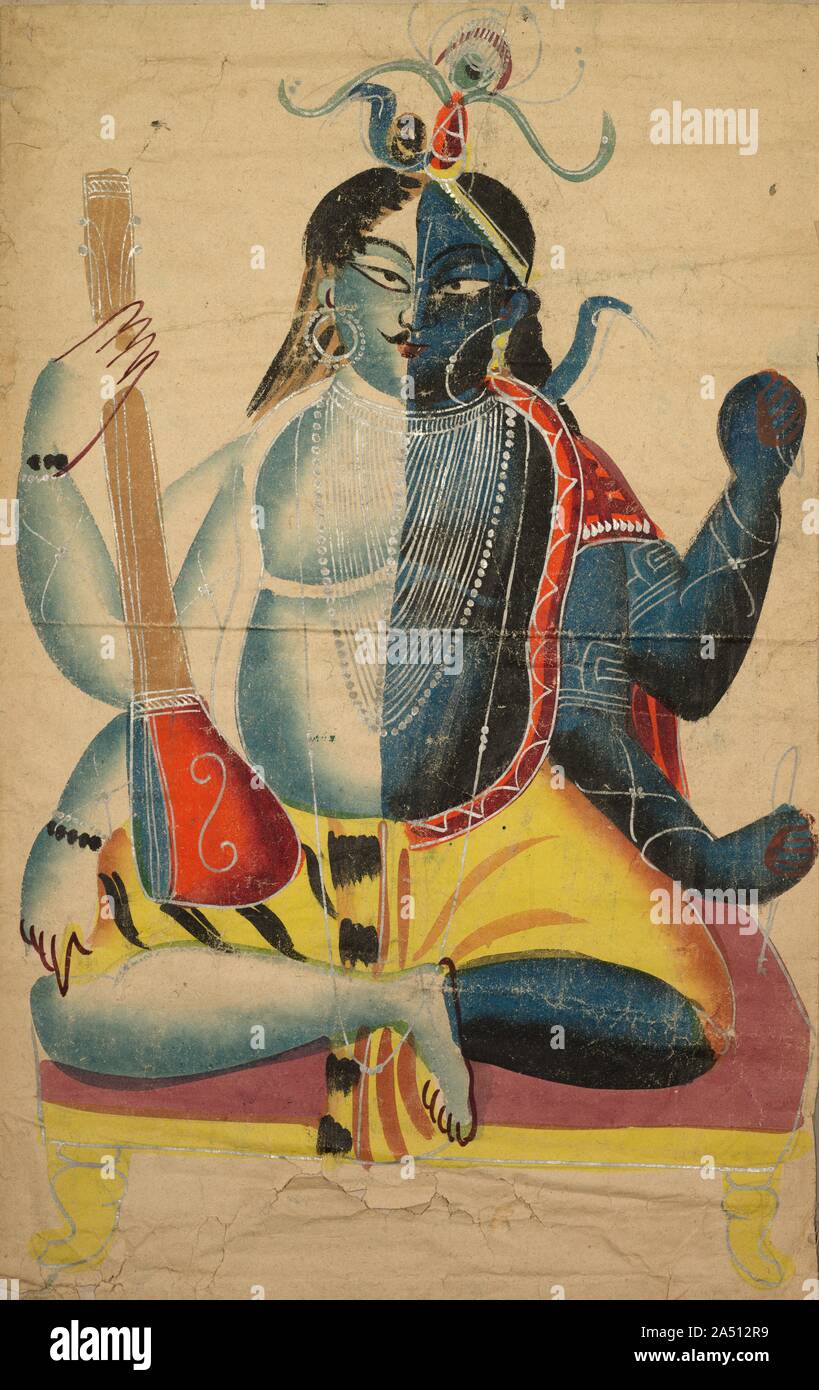 Hari-Hara, 1800s. Stock Photohttps://www.alamy.com/image-license-details/?v=1https://www.alamy.com/hari-hara-1800s-image330094445.html
Hari-Hara, 1800s. Stock Photohttps://www.alamy.com/image-license-details/?v=1https://www.alamy.com/hari-hara-1800s-image330094445.htmlRM2A512R9–Hari-Hara, 1800s.
 . English: Hari-Hara, Kalighat painting . 3rd quarter of 19th century. Unknown 290 Kalighat Hari-Hara Stock Photohttps://www.alamy.com/image-license-details/?v=1https://www.alamy.com/english-hari-hara-kalighat-painting-3rd-quarter-of-19th-century-unknown-290-kalighat-hari-hara-image188817089.html
. English: Hari-Hara, Kalighat painting . 3rd quarter of 19th century. Unknown 290 Kalighat Hari-Hara Stock Photohttps://www.alamy.com/image-license-details/?v=1https://www.alamy.com/english-hari-hara-kalighat-painting-3rd-quarter-of-19th-century-unknown-290-kalighat-hari-hara-image188817089.htmlRMMY5A3D–. English: Hari-Hara, Kalighat painting . 3rd quarter of 19th century. Unknown 290 Kalighat Hari-Hara
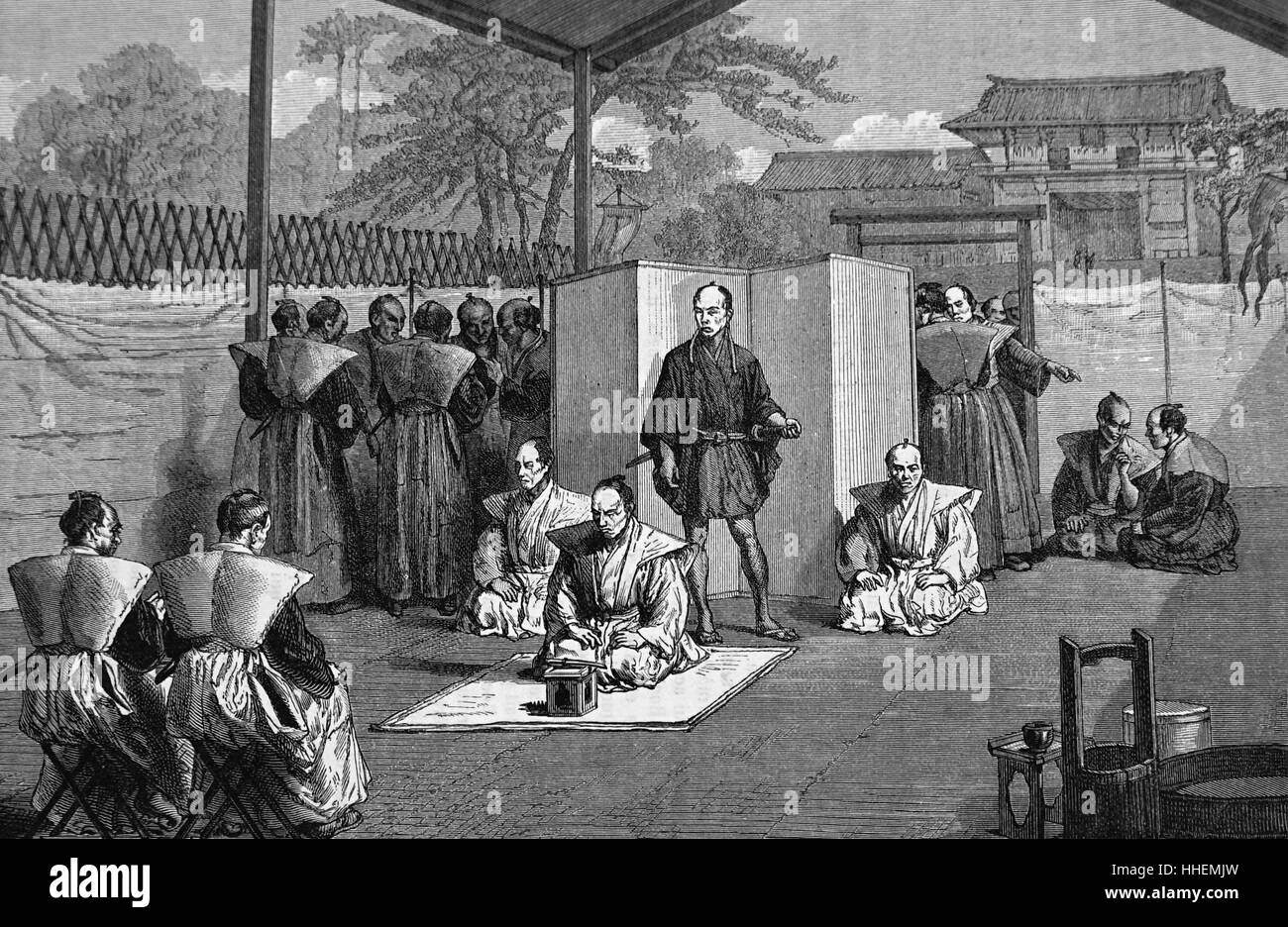 Japanese gentleman preparing to perform Hara-kiri, a form of seppuku (or ritual suicide). Dated 19th Century Stock Photohttps://www.alamy.com/image-license-details/?v=1https://www.alamy.com/stock-photo-japanese-gentleman-preparing-to-perform-hara-kiri-a-form-of-seppuku-131245265.html
Japanese gentleman preparing to perform Hara-kiri, a form of seppuku (or ritual suicide). Dated 19th Century Stock Photohttps://www.alamy.com/image-license-details/?v=1https://www.alamy.com/stock-photo-japanese-gentleman-preparing-to-perform-hara-kiri-a-form-of-seppuku-131245265.htmlRMHHEMJW–Japanese gentleman preparing to perform Hara-kiri, a form of seppuku (or ritual suicide). Dated 19th Century
 India: Painting of Harihara representing the union of Vishnu and Shiva, early 20th century. Harihara is the name of a combined deity form of both Vishnu (Hari) and Shiva (Hara) from the Hindu tradition. Also known as Shankaranarayana - where 'Shankara' is Shiva, and 'Narayana' is Vishnu - Harihara is worshipped by both Vaishnavites and Shaivites as a form of the Supreme God, as well as being a figure of worship for other Hindu traditions in general. Harihara is also sometimes used as a philosophical term to denote the unity of Vishnu and Shiva as different aspects of the same Supreme God. Stock Photohttps://www.alamy.com/image-license-details/?v=1https://www.alamy.com/india-painting-of-harihara-representing-the-union-of-vishnu-and-shiva-early-20th-century-harihara-is-the-name-of-a-combined-deity-form-of-both-vishnu-hari-and-shiva-hara-from-the-hindu-tradition-also-known-as-shankaranarayana-where-shankara-is-shiva-and-narayana-is-vishnu-harihara-is-worshipped-by-both-vaishnavites-and-shaivites-as-a-form-of-the-supreme-god-as-well-as-being-a-figure-of-worship-for-other-hindu-traditions-in-general-harihara-is-also-sometimes-used-as-a-philosophical-term-to-denote-the-unity-of-vishnu-and-shiva-as-different-aspects-of-the-same-supreme-god-image344240396.html
India: Painting of Harihara representing the union of Vishnu and Shiva, early 20th century. Harihara is the name of a combined deity form of both Vishnu (Hari) and Shiva (Hara) from the Hindu tradition. Also known as Shankaranarayana - where 'Shankara' is Shiva, and 'Narayana' is Vishnu - Harihara is worshipped by both Vaishnavites and Shaivites as a form of the Supreme God, as well as being a figure of worship for other Hindu traditions in general. Harihara is also sometimes used as a philosophical term to denote the unity of Vishnu and Shiva as different aspects of the same Supreme God. Stock Photohttps://www.alamy.com/image-license-details/?v=1https://www.alamy.com/india-painting-of-harihara-representing-the-union-of-vishnu-and-shiva-early-20th-century-harihara-is-the-name-of-a-combined-deity-form-of-both-vishnu-hari-and-shiva-hara-from-the-hindu-tradition-also-known-as-shankaranarayana-where-shankara-is-shiva-and-narayana-is-vishnu-harihara-is-worshipped-by-both-vaishnavites-and-shaivites-as-a-form-of-the-supreme-god-as-well-as-being-a-figure-of-worship-for-other-hindu-traditions-in-general-harihara-is-also-sometimes-used-as-a-philosophical-term-to-denote-the-unity-of-vishnu-and-shiva-as-different-aspects-of-the-same-supreme-god-image344240396.htmlRM2B01E3T–India: Painting of Harihara representing the union of Vishnu and Shiva, early 20th century. Harihara is the name of a combined deity form of both Vishnu (Hari) and Shiva (Hara) from the Hindu tradition. Also known as Shankaranarayana - where 'Shankara' is Shiva, and 'Narayana' is Vishnu - Harihara is worshipped by both Vaishnavites and Shaivites as a form of the Supreme God, as well as being a figure of worship for other Hindu traditions in general. Harihara is also sometimes used as a philosophical term to denote the unity of Vishnu and Shiva as different aspects of the same Supreme God.
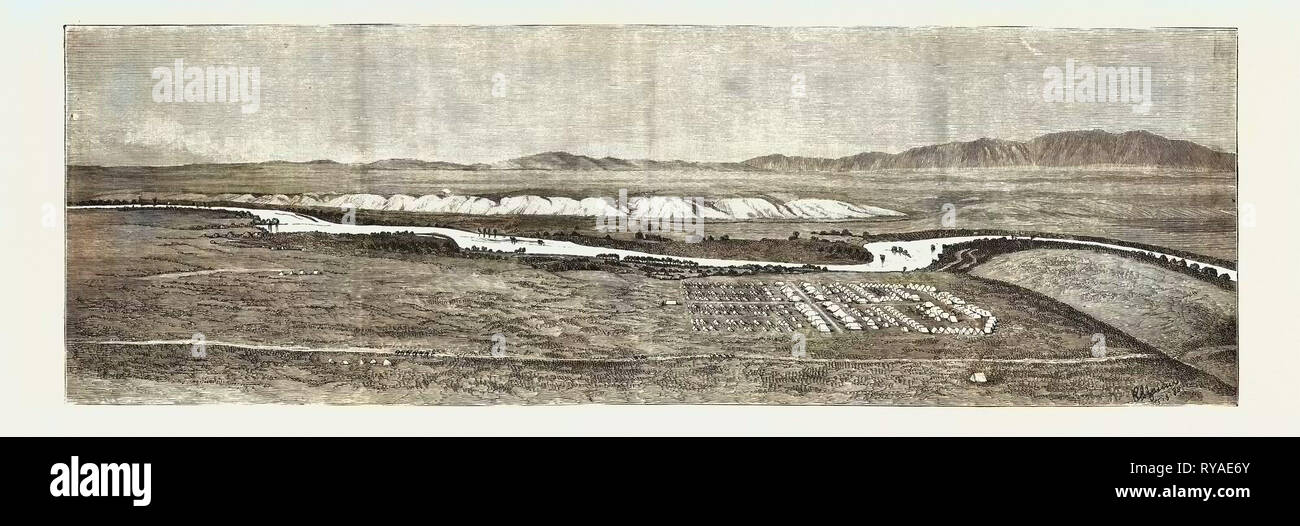 The Camp of the Afghan Boundary Commission Near Tirpul, in the Valley of the Hari-Rud Stock Photohttps://www.alamy.com/image-license-details/?v=1https://www.alamy.com/the-camp-of-the-afghan-boundary-commission-near-tirpul-in-the-valley-of-the-hari-rud-image240561187.html
The Camp of the Afghan Boundary Commission Near Tirpul, in the Valley of the Hari-Rud Stock Photohttps://www.alamy.com/image-license-details/?v=1https://www.alamy.com/the-camp-of-the-afghan-boundary-commission-near-tirpul-in-the-valley-of-the-hari-rud-image240561187.htmlRMRYAE6Y–The Camp of the Afghan Boundary Commission Near Tirpul, in the Valley of the Hari-Rud
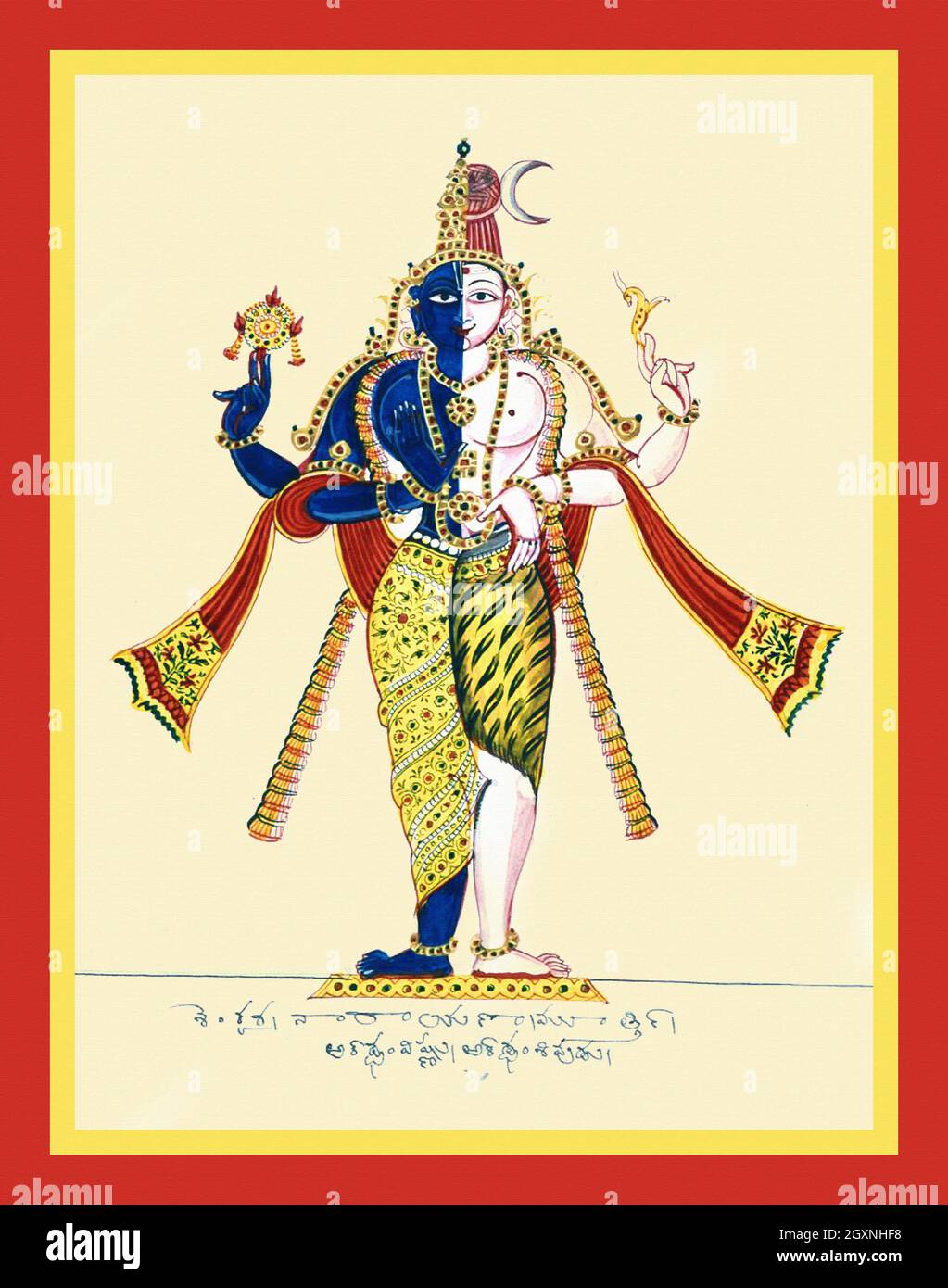 Shankaranarayana or Hari-Hara, Shiva and Vishnu joined into one Stock Photohttps://www.alamy.com/image-license-details/?v=1https://www.alamy.com/shankaranarayana-or-hari-hara-shiva-and-vishnu-joined-into-one-image446715004.html
Shankaranarayana or Hari-Hara, Shiva and Vishnu joined into one Stock Photohttps://www.alamy.com/image-license-details/?v=1https://www.alamy.com/shankaranarayana-or-hari-hara-shiva-and-vishnu-joined-into-one-image446715004.htmlRM2GXNHF8–Shankaranarayana or Hari-Hara, Shiva and Vishnu joined into one
 Sonepur,Animal,Fair,coloured,head,face,trunk,of an elephant,in mangroe tree,shade,at Hari Hara,Kshetra,at,confluence,of ,Rivers,the Ganga,& Son,Chhapr Stock Photohttps://www.alamy.com/image-license-details/?v=1https://www.alamy.com/sonepuranimalfaircolouredheadfacetrunkof-an-elephantin-mangroe-treeshadeat-hari-harakshetraatconfluenceof-riversthe-ganga-sonchhapr-image327359474.html
Sonepur,Animal,Fair,coloured,head,face,trunk,of an elephant,in mangroe tree,shade,at Hari Hara,Kshetra,at,confluence,of ,Rivers,the Ganga,& Son,Chhapr Stock Photohttps://www.alamy.com/image-license-details/?v=1https://www.alamy.com/sonepuranimalfaircolouredheadfacetrunkof-an-elephantin-mangroe-treeshadeat-hari-harakshetraatconfluenceof-riversthe-ganga-sonchhapr-image327359474.htmlRM2A0GE9P–Sonepur,Animal,Fair,coloured,head,face,trunk,of an elephant,in mangroe tree,shade,at Hari Hara,Kshetra,at,confluence,of ,Rivers,the Ganga,& Son,Chhapr
 Head of Harihara 7th century, style of Phnom Da in Cambodia. sandstone, sculpture. Harihara is the name of a combined deity form of both Vishnu (Hari) and Shiva ( Hara) from the Hindu tradition. Also known as Shankaranarayana Stock Photohttps://www.alamy.com/image-license-details/?v=1https://www.alamy.com/stock-photo-head-of-harihara-7th-century-style-of-phnom-da-in-cambodia-sandstone-57358290.html
Head of Harihara 7th century, style of Phnom Da in Cambodia. sandstone, sculpture. Harihara is the name of a combined deity form of both Vishnu (Hari) and Shiva ( Hara) from the Hindu tradition. Also known as Shankaranarayana Stock Photohttps://www.alamy.com/image-license-details/?v=1https://www.alamy.com/stock-photo-head-of-harihara-7th-century-style-of-phnom-da-in-cambodia-sandstone-57358290.htmlRMD98W2A–Head of Harihara 7th century, style of Phnom Da in Cambodia. sandstone, sculpture. Harihara is the name of a combined deity form of both Vishnu (Hari) and Shiva ( Hara) from the Hindu tradition. Also known as Shankaranarayana
 Standing Hari-Hara, from 10th century found in Basalt Surajkund, Nalanda, Bihar now exposed in the Indian Museum in Kolkata, West Bengal, India Stock Photohttps://www.alamy.com/image-license-details/?v=1https://www.alamy.com/standing-hari-hara-from-10th-century-found-in-basalt-surajkund-nalanda-bihar-now-exposed-in-the-indian-museum-in-kolkata-west-bengal-india-image443904053.html
Standing Hari-Hara, from 10th century found in Basalt Surajkund, Nalanda, Bihar now exposed in the Indian Museum in Kolkata, West Bengal, India Stock Photohttps://www.alamy.com/image-license-details/?v=1https://www.alamy.com/standing-hari-hara-from-10th-century-found-in-basalt-surajkund-nalanda-bihar-now-exposed-in-the-indian-museum-in-kolkata-west-bengal-india-image443904053.htmlRF2GP5G45–Standing Hari-Hara, from 10th century found in Basalt Surajkund, Nalanda, Bihar now exposed in the Indian Museum in Kolkata, West Bengal, India
 India: 'Harihara - Half Shiva, left, and Half Vishnu, right'. Illustration by Pierre Sonnerat (1748-1814), 1782. Pierre Sonnerat (1748-1814) was a French naturalist and explorer who made several voyages to southeast Asia between 1769 and 1781. He published this two-volume account of his voyage of 1774-81 in 1782. Volume 1 deals exclusively with India, whose culture Sonnerat very much admired, and is especially noteworthy for its extended discussion of religion in India, Hinduism in particular. The book is illustrated with engravings based on Sonnerat’s drawings. Stock Photohttps://www.alamy.com/image-license-details/?v=1https://www.alamy.com/india-harihara-half-shiva-left-and-half-vishnu-right-illustration-by-pierre-sonnerat-1748-1814-1782-pierre-sonnerat-1748-1814-was-a-french-naturalist-and-explorer-who-made-several-voyages-to-southeast-asia-between-1769-and-1781-he-published-this-two-volume-account-of-his-voyage-of-1774-81-in-1782-volume-1-deals-exclusively-with-india-whose-culture-sonnerat-very-much-admired-and-is-especially-noteworthy-for-its-extended-discussion-of-religion-in-india-hinduism-in-particular-the-book-is-illustrated-with-engravings-based-on-sonnerats-drawings-image344226917.html
India: 'Harihara - Half Shiva, left, and Half Vishnu, right'. Illustration by Pierre Sonnerat (1748-1814), 1782. Pierre Sonnerat (1748-1814) was a French naturalist and explorer who made several voyages to southeast Asia between 1769 and 1781. He published this two-volume account of his voyage of 1774-81 in 1782. Volume 1 deals exclusively with India, whose culture Sonnerat very much admired, and is especially noteworthy for its extended discussion of religion in India, Hinduism in particular. The book is illustrated with engravings based on Sonnerat’s drawings. Stock Photohttps://www.alamy.com/image-license-details/?v=1https://www.alamy.com/india-harihara-half-shiva-left-and-half-vishnu-right-illustration-by-pierre-sonnerat-1748-1814-1782-pierre-sonnerat-1748-1814-was-a-french-naturalist-and-explorer-who-made-several-voyages-to-southeast-asia-between-1769-and-1781-he-published-this-two-volume-account-of-his-voyage-of-1774-81-in-1782-volume-1-deals-exclusively-with-india-whose-culture-sonnerat-very-much-admired-and-is-especially-noteworthy-for-its-extended-discussion-of-religion-in-india-hinduism-in-particular-the-book-is-illustrated-with-engravings-based-on-sonnerats-drawings-image344226917.htmlRM2B00TXD–India: 'Harihara - Half Shiva, left, and Half Vishnu, right'. Illustration by Pierre Sonnerat (1748-1814), 1782. Pierre Sonnerat (1748-1814) was a French naturalist and explorer who made several voyages to southeast Asia between 1769 and 1781. He published this two-volume account of his voyage of 1774-81 in 1782. Volume 1 deals exclusively with India, whose culture Sonnerat very much admired, and is especially noteworthy for its extended discussion of religion in India, Hinduism in particular. The book is illustrated with engravings based on Sonnerat’s drawings.
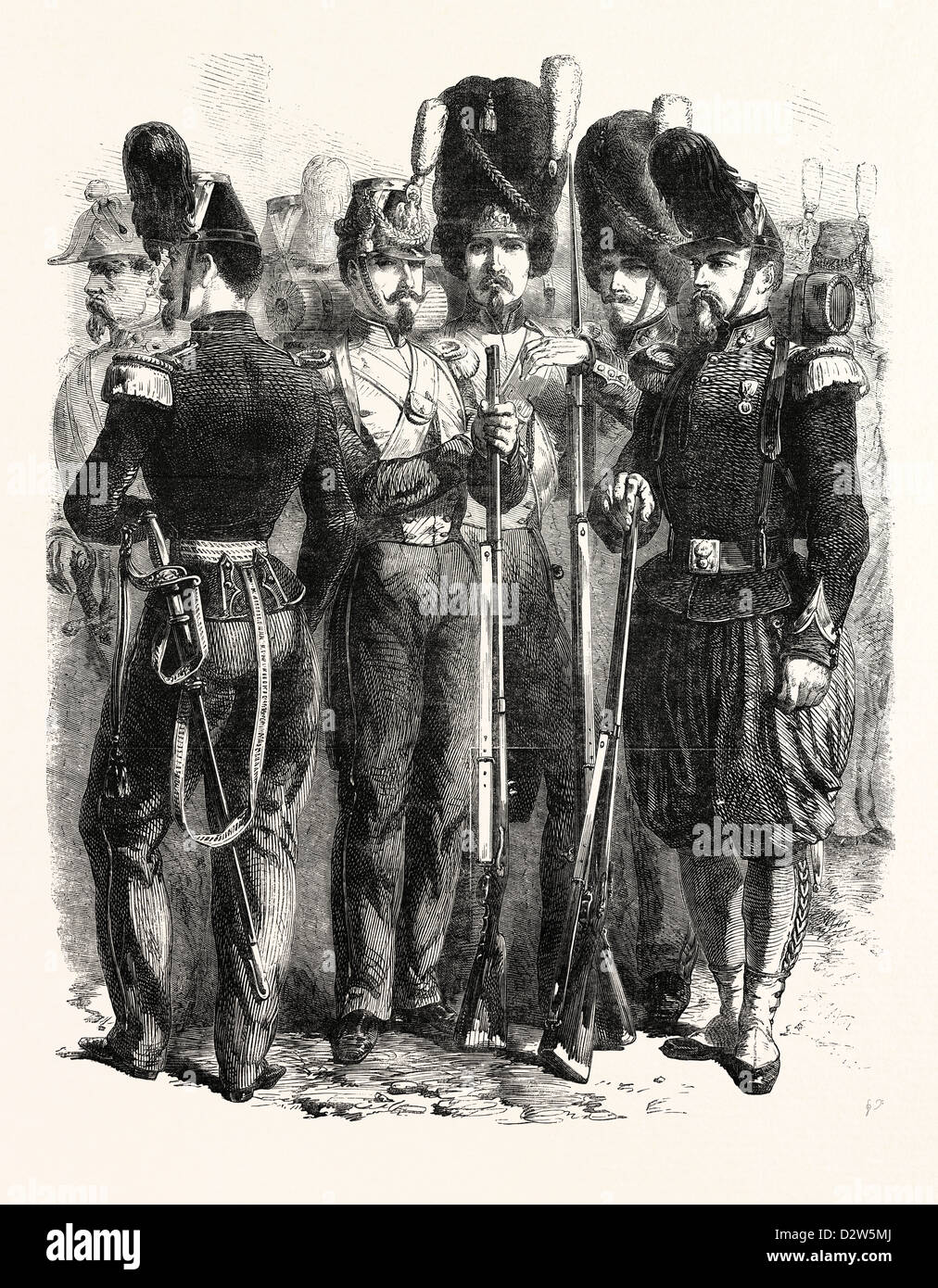 THE CAMP OF THE AFGHAN BOUNDARY COMMISSION NEAR TIRPUL, IN THE VALLEY OF THE HARI-RUD Stock Photohttps://www.alamy.com/image-license-details/?v=1https://www.alamy.com/stock-photo-the-camp-of-the-afghan-boundary-commission-near-tirpul-in-the-valley-53413714.html
THE CAMP OF THE AFGHAN BOUNDARY COMMISSION NEAR TIRPUL, IN THE VALLEY OF THE HARI-RUD Stock Photohttps://www.alamy.com/image-license-details/?v=1https://www.alamy.com/stock-photo-the-camp-of-the-afghan-boundary-commission-near-tirpul-in-the-valley-53413714.htmlRMD2W5MJ–THE CAMP OF THE AFGHAN BOUNDARY COMMISSION NEAR TIRPUL, IN THE VALLEY OF THE HARI-RUD
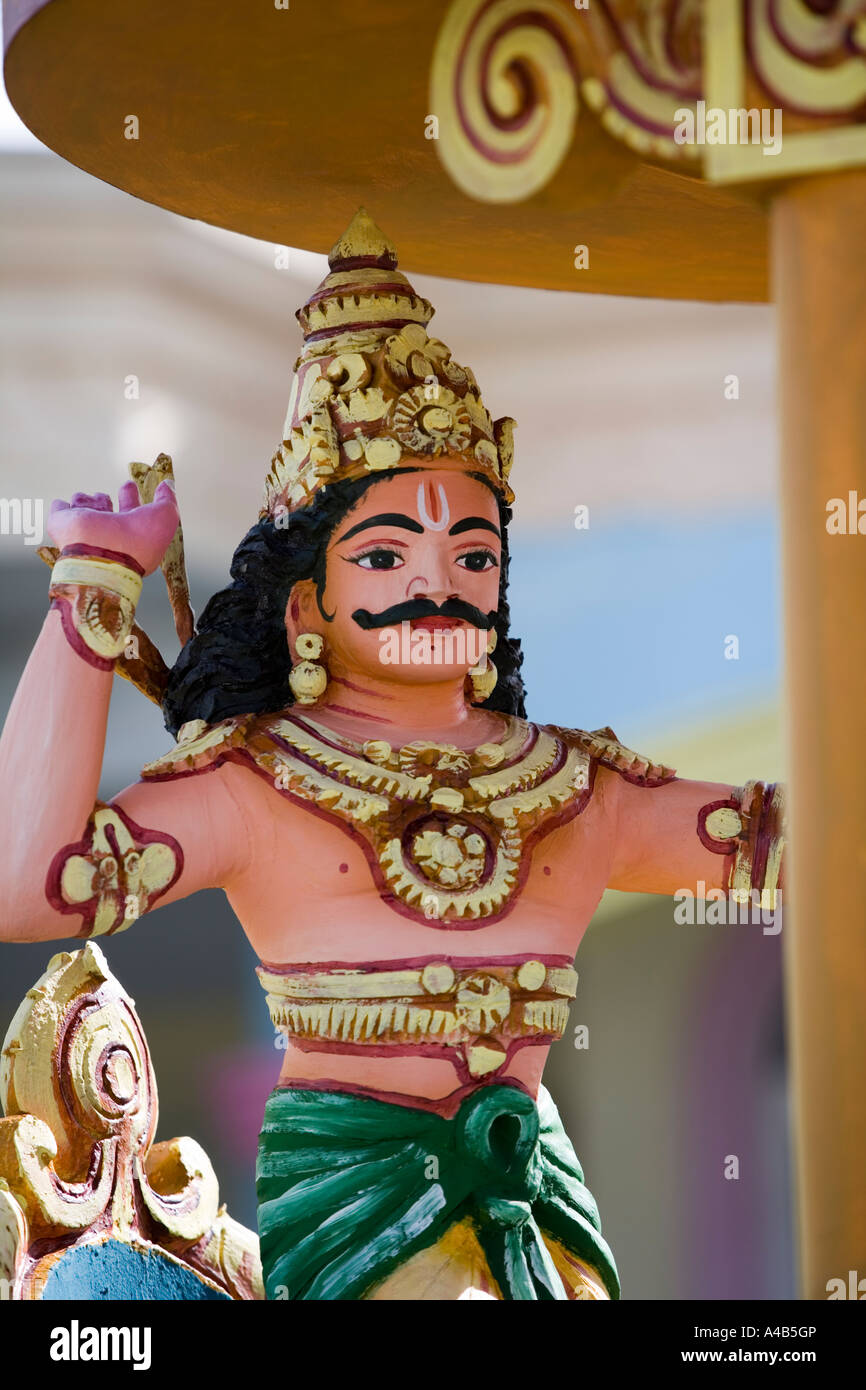 'Hari Hara Tamil Temple' with ^Karnam in chariot - Mauritius Stock Photohttps://www.alamy.com/image-license-details/?v=1https://www.alamy.com/stock-photo-hari-hara-tamil-temple-with-karnam-in-chariot-mauritius-10993557.html
'Hari Hara Tamil Temple' with ^Karnam in chariot - Mauritius Stock Photohttps://www.alamy.com/image-license-details/?v=1https://www.alamy.com/stock-photo-hari-hara-tamil-temple-with-karnam-in-chariot-mauritius-10993557.htmlRMA4B5GP–'Hari Hara Tamil Temple' with ^Karnam in chariot - Mauritius
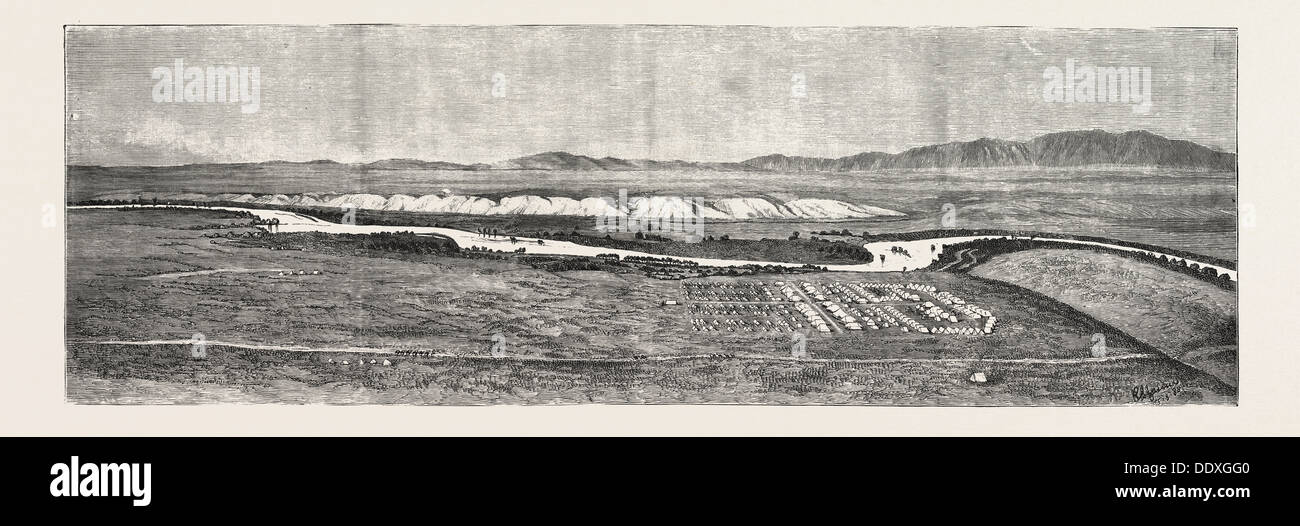 THE CAMP OF THE AFGHAN BOUNDARY COMMISSION NEAR TIRPUL, IN THE VALLEY OF THE HARI-RUD Stock Photohttps://www.alamy.com/image-license-details/?v=1https://www.alamy.com/the-camp-of-the-afghan-boundary-commission-near-tirpul-in-the-valley-image60205376.html
THE CAMP OF THE AFGHAN BOUNDARY COMMISSION NEAR TIRPUL, IN THE VALLEY OF THE HARI-RUD Stock Photohttps://www.alamy.com/image-license-details/?v=1https://www.alamy.com/the-camp-of-the-afghan-boundary-commission-near-tirpul-in-the-valley-image60205376.htmlRMDDXGG0–THE CAMP OF THE AFGHAN BOUNDARY COMMISSION NEAR TIRPUL, IN THE VALLEY OF THE HARI-RUD
 London, United Kingdom - December 21, 2019: Standing figure of Harihara displayed in the British Museum, London, United Kingdom. Stock Photohttps://www.alamy.com/image-license-details/?v=1https://www.alamy.com/london-united-kingdom-december-21-2019-standing-figure-of-harihara-displayed-in-the-british-museum-london-united-kingdom-image259691137.html
London, United Kingdom - December 21, 2019: Standing figure of Harihara displayed in the British Museum, London, United Kingdom. Stock Photohttps://www.alamy.com/image-license-details/?v=1https://www.alamy.com/london-united-kingdom-december-21-2019-standing-figure-of-harihara-displayed-in-the-british-museum-london-united-kingdom-image259691137.htmlRFW2DXKD–London, United Kingdom - December 21, 2019: Standing figure of Harihara displayed in the British Museum, London, United Kingdom.
 . The history of the devil and the idea of evil; from the earliest times to the present day . mKha sGroma, the Tibetan Kali Bronze. (Musee Guimet.) for this most diabolical deity, who among the Buddhistsof Thibet is changed into a devilish demon under thename of niKhasGroma. 100 THE HISTORY OF THE DEVIL. The Pantheism which lies at the bottom of the wholeHindu mythology finds expression in the worship ofHariHara, who is a combination of Vishnu and Siva. In. Kali-Durga in the Hindu PantheoN- (Reproduced from Wilkins.) the Mahatmya, or collection of temple legends of the Hari-Hara, a town in the Stock Photohttps://www.alamy.com/image-license-details/?v=1https://www.alamy.com/the-history-of-the-devil-and-the-idea-of-evil-from-the-earliest-times-to-the-present-day-mkha-sgroma-the-tibetan-kali-bronze-musee-guimet-for-this-most-diabolical-deity-who-among-the-buddhistsof-thibet-is-changed-into-a-devilish-demon-under-thename-of-nikhasgroma-100-the-history-of-the-devil-the-pantheism-which-lies-at-the-bottom-of-the-wholehindu-mythology-finds-expression-in-the-worship-ofharihara-who-is-a-combination-of-vishnu-and-siva-in-kali-durga-in-the-hindu-pantheon-reproduced-from-wilkins-the-mahatmya-or-collection-of-temple-legends-of-the-hari-hara-a-town-in-the-image369829082.html
. The history of the devil and the idea of evil; from the earliest times to the present day . mKha sGroma, the Tibetan Kali Bronze. (Musee Guimet.) for this most diabolical deity, who among the Buddhistsof Thibet is changed into a devilish demon under thename of niKhasGroma. 100 THE HISTORY OF THE DEVIL. The Pantheism which lies at the bottom of the wholeHindu mythology finds expression in the worship ofHariHara, who is a combination of Vishnu and Siva. In. Kali-Durga in the Hindu PantheoN- (Reproduced from Wilkins.) the Mahatmya, or collection of temple legends of the Hari-Hara, a town in the Stock Photohttps://www.alamy.com/image-license-details/?v=1https://www.alamy.com/the-history-of-the-devil-and-the-idea-of-evil-from-the-earliest-times-to-the-present-day-mkha-sgroma-the-tibetan-kali-bronze-musee-guimet-for-this-most-diabolical-deity-who-among-the-buddhistsof-thibet-is-changed-into-a-devilish-demon-under-thename-of-nikhasgroma-100-the-history-of-the-devil-the-pantheism-which-lies-at-the-bottom-of-the-wholehindu-mythology-finds-expression-in-the-worship-ofharihara-who-is-a-combination-of-vishnu-and-siva-in-kali-durga-in-the-hindu-pantheon-reproduced-from-wilkins-the-mahatmya-or-collection-of-temple-legends-of-the-hari-hara-a-town-in-the-image369829082.htmlRM2CDK4NE–. The history of the devil and the idea of evil; from the earliest times to the present day . mKha sGroma, the Tibetan Kali Bronze. (Musee Guimet.) for this most diabolical deity, who among the Buddhistsof Thibet is changed into a devilish demon under thename of niKhasGroma. 100 THE HISTORY OF THE DEVIL. The Pantheism which lies at the bottom of the wholeHindu mythology finds expression in the worship ofHariHara, who is a combination of Vishnu and Siva. In. Kali-Durga in the Hindu PantheoN- (Reproduced from Wilkins.) the Mahatmya, or collection of temple legends of the Hari-Hara, a town in the
 Statue of shiva and vitthala on gate of dharmashala at ; Pandharpur district Solapur ; Maharashtra ; India Stock Photohttps://www.alamy.com/image-license-details/?v=1https://www.alamy.com/stock-photo-statue-of-shiva-and-vitthala-on-gate-of-dharmashala-at-pandharpur-83632126.html
Statue of shiva and vitthala on gate of dharmashala at ; Pandharpur district Solapur ; Maharashtra ; India Stock Photohttps://www.alamy.com/image-license-details/?v=1https://www.alamy.com/stock-photo-statue-of-shiva-and-vitthala-on-gate-of-dharmashala-at-pandharpur-83632126.htmlRMET1NHJ–Statue of shiva and vitthala on gate of dharmashala at ; Pandharpur district Solapur ; Maharashtra ; India
 Harihara 3 Hindu Temple, Osian, near Jodhpur, Rajasthan, India Stock Photohttps://www.alamy.com/image-license-details/?v=1https://www.alamy.com/stock-photo-harihara-3-hindu-temple-osian-near-jodhpur-rajasthan-india-23739328.html
Harihara 3 Hindu Temple, Osian, near Jodhpur, Rajasthan, India Stock Photohttps://www.alamy.com/image-license-details/?v=1https://www.alamy.com/stock-photo-harihara-3-hindu-temple-osian-near-jodhpur-rajasthan-india-23739328.htmlRMBAHBN4–Harihara 3 Hindu Temple, Osian, near Jodhpur, Rajasthan, India
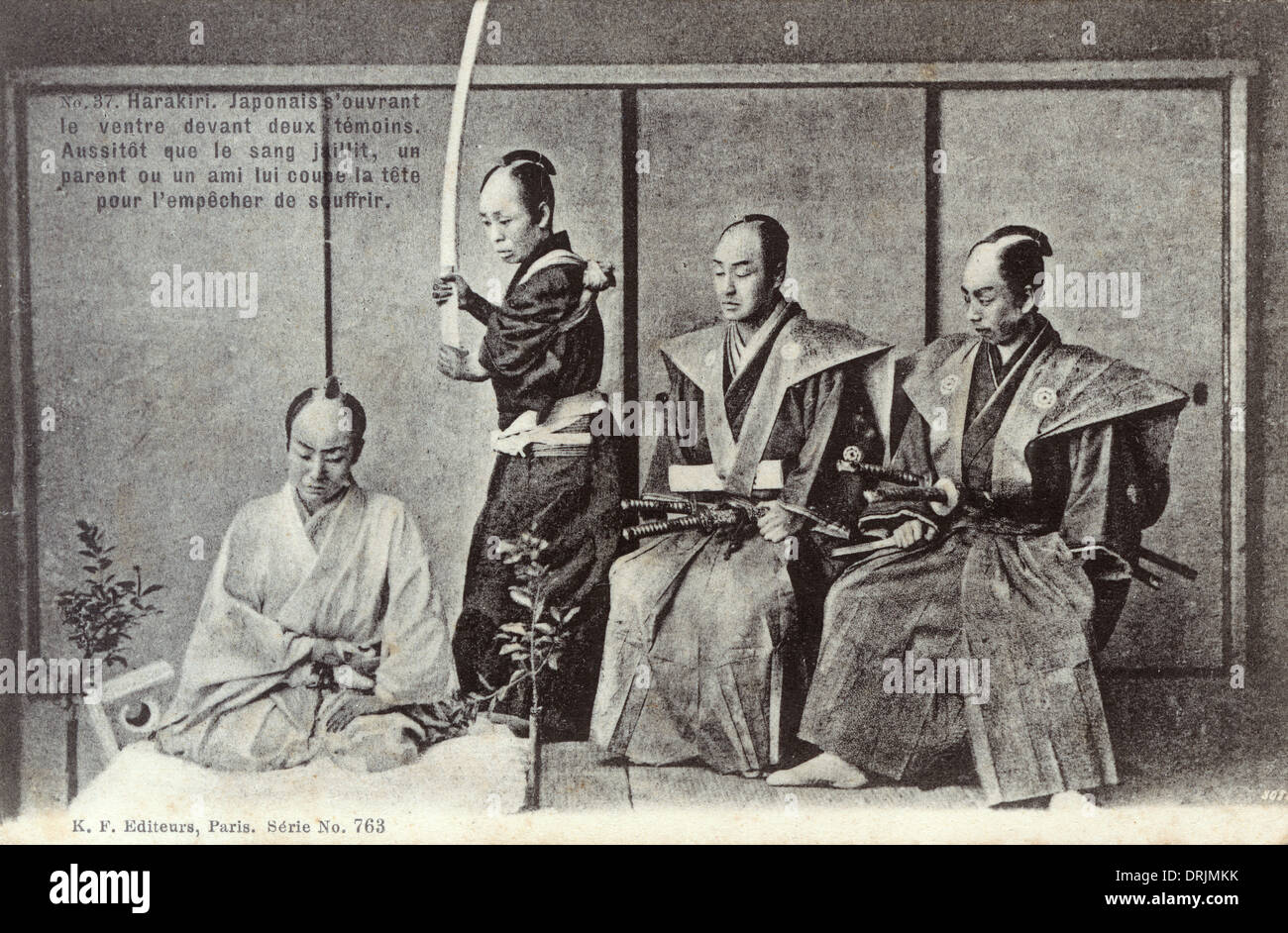 Staged Seppuku Harakiri Ceremony - Japan Stock Photohttps://www.alamy.com/image-license-details/?v=1https://www.alamy.com/staged-seppuku-harakiri-ceremony-japan-image66179559.html
Staged Seppuku Harakiri Ceremony - Japan Stock Photohttps://www.alamy.com/image-license-details/?v=1https://www.alamy.com/staged-seppuku-harakiri-ceremony-japan-image66179559.htmlRMDRJMKK–Staged Seppuku Harakiri Ceremony - Japan
 Hari-Hara (recto); Vasudeva (Krishna's Father) Fleeing with Krishna Encounters a Cobra and a Jackal (verso), c. 1890. Eastern India, Bengal, Kolkata, Kalighat. Watercolor, graphite, ink, and tin on paper; secondary support: 49.9 x 29.8 cm (19 5/8 x 11 3/4 in.); painting only: 45.5 x 28.2 cm (17 15/16 x 11 1/8 in.). Stock Photohttps://www.alamy.com/image-license-details/?v=1https://www.alamy.com/hari-hara-recto-vasudeva-krishnas-father-fleeing-with-krishna-encounters-a-cobra-and-a-jackal-verso-c-1890-eastern-india-bengal-kolkata-kalighat-watercolor-graphite-ink-and-tin-on-paper-secondary-support-499-x-298-cm-19-58-x-11-34-in-painting-only-455-x-282-cm-17-1516-x-11-18-in-image448065380.html
Hari-Hara (recto); Vasudeva (Krishna's Father) Fleeing with Krishna Encounters a Cobra and a Jackal (verso), c. 1890. Eastern India, Bengal, Kolkata, Kalighat. Watercolor, graphite, ink, and tin on paper; secondary support: 49.9 x 29.8 cm (19 5/8 x 11 3/4 in.); painting only: 45.5 x 28.2 cm (17 15/16 x 11 1/8 in.). Stock Photohttps://www.alamy.com/image-license-details/?v=1https://www.alamy.com/hari-hara-recto-vasudeva-krishnas-father-fleeing-with-krishna-encounters-a-cobra-and-a-jackal-verso-c-1890-eastern-india-bengal-kolkata-kalighat-watercolor-graphite-ink-and-tin-on-paper-secondary-support-499-x-298-cm-19-58-x-11-34-in-painting-only-455-x-282-cm-17-1516-x-11-18-in-image448065380.htmlRM2H0Y3Y0–Hari-Hara (recto); Vasudeva (Krishna's Father) Fleeing with Krishna Encounters a Cobra and a Jackal (verso), c. 1890. Eastern India, Bengal, Kolkata, Kalighat. Watercolor, graphite, ink, and tin on paper; secondary support: 49.9 x 29.8 cm (19 5/8 x 11 3/4 in.); painting only: 45.5 x 28.2 cm (17 15/16 x 11 1/8 in.).
 Hari-Hara, 1800s. Stock Photohttps://www.alamy.com/image-license-details/?v=1https://www.alamy.com/hari-hara-1800s-image330094440.html
Hari-Hara, 1800s. Stock Photohttps://www.alamy.com/image-license-details/?v=1https://www.alamy.com/hari-hara-1800s-image330094440.htmlRM2A512R4–Hari-Hara, 1800s.
 . English: Hari-Hara, Kalighat painting . 3rd quarter of 19th century. Unknown 332 Kalighat Hari-Hara Stock Photohttps://www.alamy.com/image-license-details/?v=1https://www.alamy.com/english-hari-hara-kalighat-painting-3rd-quarter-of-19th-century-unknown-332-kalighat-hari-hara-image187561636.html
. English: Hari-Hara, Kalighat painting . 3rd quarter of 19th century. Unknown 332 Kalighat Hari-Hara Stock Photohttps://www.alamy.com/image-license-details/?v=1https://www.alamy.com/english-hari-hara-kalighat-painting-3rd-quarter-of-19th-century-unknown-332-kalighat-hari-hara-image187561636.htmlRMMW44NT–. English: Hari-Hara, Kalighat painting . 3rd quarter of 19th century. Unknown 332 Kalighat Hari-Hara
 Harihara. Museum: State Oriental Art Museum, Moscow. Stock Photohttps://www.alamy.com/image-license-details/?v=1https://www.alamy.com/harihara-museum-state-oriental-art-museum-moscow-image211770031.html
Harihara. Museum: State Oriental Art Museum, Moscow. Stock Photohttps://www.alamy.com/image-license-details/?v=1https://www.alamy.com/harihara-museum-state-oriental-art-museum-moscow-image211770031.htmlRMP8EXRB–Harihara. Museum: State Oriental Art Museum, Moscow.
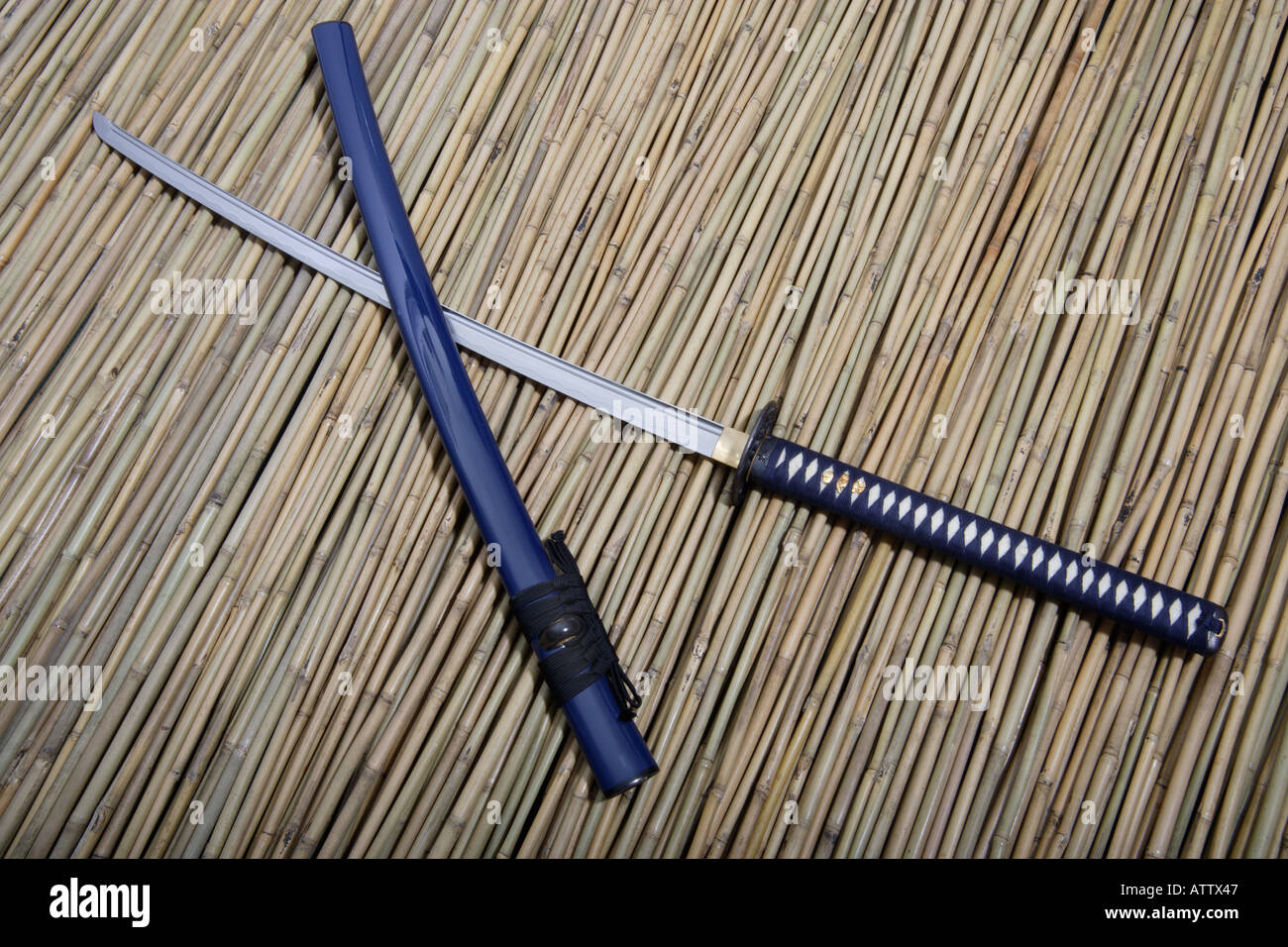 Samurai sword and sheath on bamboo canes Stock Photohttps://www.alamy.com/image-license-details/?v=1https://www.alamy.com/samurai-sword-and-sheath-on-bamboo-canes-image5352006.html
Samurai sword and sheath on bamboo canes Stock Photohttps://www.alamy.com/image-license-details/?v=1https://www.alamy.com/samurai-sword-and-sheath-on-bamboo-canes-image5352006.htmlRFATTX47–Samurai sword and sheath on bamboo canes
 selamat hara merdeka malaysia Stock Vectorhttps://www.alamy.com/image-license-details/?v=1https://www.alamy.com/selamat-hara-merdeka-malaysia-image432872292.html
selamat hara merdeka malaysia Stock Vectorhttps://www.alamy.com/image-license-details/?v=1https://www.alamy.com/selamat-hara-merdeka-malaysia-image432872292.htmlRF2G4710M–selamat hara merdeka malaysia
 Sonepur,Animal,Fair,elephant,knelt down,before going ,into River Son,water,,people,curiously, watching,scene,Hari Hara Kshetra,Confluence,of rivers,Ga Stock Photohttps://www.alamy.com/image-license-details/?v=1https://www.alamy.com/sonepuranimalfairelephantknelt-downbefore-going-into-river-sonwaterpeoplecuriously-watchingscenehari-hara-kshetraconfluenceof-riversga-image327359558.html
Sonepur,Animal,Fair,elephant,knelt down,before going ,into River Son,water,,people,curiously, watching,scene,Hari Hara Kshetra,Confluence,of rivers,Ga Stock Photohttps://www.alamy.com/image-license-details/?v=1https://www.alamy.com/sonepuranimalfairelephantknelt-downbefore-going-into-river-sonwaterpeoplecuriously-watchingscenehari-hara-kshetraconfluenceof-riversga-image327359558.htmlRM2A0GECP–Sonepur,Animal,Fair,elephant,knelt down,before going ,into River Son,water,,people,curiously, watching,scene,Hari Hara Kshetra,Confluence,of rivers,Ga
 Head of Harihara. late 9th, early 10th century. Bakheng style (900-925) Sandstone sculpture from Cambodia. Harihara is the name of a combined deity form of both Vishnu (Hari) and Shiva ( Hara) from the Hindu tradition. Also known as Shankaranarayana Stock Photohttps://www.alamy.com/image-license-details/?v=1https://www.alamy.com/stock-photo-head-of-harihara-late-9th-early-10th-century-bakheng-style-900-925-57357981.html
Head of Harihara. late 9th, early 10th century. Bakheng style (900-925) Sandstone sculpture from Cambodia. Harihara is the name of a combined deity form of both Vishnu (Hari) and Shiva ( Hara) from the Hindu tradition. Also known as Shankaranarayana Stock Photohttps://www.alamy.com/image-license-details/?v=1https://www.alamy.com/stock-photo-head-of-harihara-late-9th-early-10th-century-bakheng-style-900-925-57357981.htmlRMD98TK9–Head of Harihara. late 9th, early 10th century. Bakheng style (900-925) Sandstone sculpture from Cambodia. Harihara is the name of a combined deity form of both Vishnu (Hari) and Shiva ( Hara) from the Hindu tradition. Also known as Shankaranarayana
![[^Hari ^Hara ^Tamil ^Temple] with ^Krishna and ^Karnam in ^chariot - 'Mauritius' Stock Photo [^Hari ^Hara ^Tamil ^Temple] with ^Krishna and ^Karnam in ^chariot - 'Mauritius' Stock Photo](https://c8.alamy.com/comp/A4B5GR/hari-hara-tamil-temple-with-krishna-and-karnam-in-chariot-mauritius-A4B5GR.jpg) [^Hari ^Hara ^Tamil ^Temple] with ^Krishna and ^Karnam in ^chariot - 'Mauritius' Stock Photohttps://www.alamy.com/image-license-details/?v=1https://www.alamy.com/stock-photo-hari-hara-tamil-temple-with-krishna-and-karnam-in-chariot-mauritius-10993558.html
[^Hari ^Hara ^Tamil ^Temple] with ^Krishna and ^Karnam in ^chariot - 'Mauritius' Stock Photohttps://www.alamy.com/image-license-details/?v=1https://www.alamy.com/stock-photo-hari-hara-tamil-temple-with-krishna-and-karnam-in-chariot-mauritius-10993558.htmlRMA4B5GR–[^Hari ^Hara ^Tamil ^Temple] with ^Krishna and ^Karnam in ^chariot - 'Mauritius'
 Harihara 2 Hindu Temple, Osian, near Jodhpur, Rajasthan, India Stock Photohttps://www.alamy.com/image-license-details/?v=1https://www.alamy.com/stock-photo-harihara-2-hindu-temple-osian-near-jodhpur-rajasthan-india-23739345.html
Harihara 2 Hindu Temple, Osian, near Jodhpur, Rajasthan, India Stock Photohttps://www.alamy.com/image-license-details/?v=1https://www.alamy.com/stock-photo-harihara-2-hindu-temple-osian-near-jodhpur-rajasthan-india-23739345.htmlRMBAHBNN–Harihara 2 Hindu Temple, Osian, near Jodhpur, Rajasthan, India
 Harihara, 10th-11th century. Stock Photohttps://www.alamy.com/image-license-details/?v=1https://www.alamy.com/harihara-10th-11th-century-image186154369.html
Harihara, 10th-11th century. Stock Photohttps://www.alamy.com/image-license-details/?v=1https://www.alamy.com/harihara-10th-11th-century-image186154369.htmlRMMPT1P9–Harihara, 10th-11th century.
 . English: Hari-Hara, Kalighat painting . 3rd quarter of 19th century. Unknown 333 Kalighat Hari-Hara Stock Photohttps://www.alamy.com/image-license-details/?v=1https://www.alamy.com/english-hari-hara-kalighat-painting-3rd-quarter-of-19th-century-unknown-333-kalighat-hari-hara-image188074661.html
. English: Hari-Hara, Kalighat painting . 3rd quarter of 19th century. Unknown 333 Kalighat Hari-Hara Stock Photohttps://www.alamy.com/image-license-details/?v=1https://www.alamy.com/english-hari-hara-kalighat-painting-3rd-quarter-of-19th-century-unknown-333-kalighat-hari-hara-image188074661.htmlRMMWYF45–. English: Hari-Hara, Kalighat painting . 3rd quarter of 19th century. Unknown 333 Kalighat Hari-Hara
 Samurai sword and sheath on bamboo canes Stock Photohttps://www.alamy.com/image-license-details/?v=1https://www.alamy.com/samurai-sword-and-sheath-on-bamboo-canes-image5352013.html
Samurai sword and sheath on bamboo canes Stock Photohttps://www.alamy.com/image-license-details/?v=1https://www.alamy.com/samurai-sword-and-sheath-on-bamboo-canes-image5352013.htmlRFATTX4E–Samurai sword and sheath on bamboo canes
![[^Hari ^Hara ^Tamil ^Temple] with ^Krishna and ^Karnam in ^chariot - 'Mauritius' Stock Photo [^Hari ^Hara ^Tamil ^Temple] with ^Krishna and ^Karnam in ^chariot - 'Mauritius' Stock Photo](https://c8.alamy.com/comp/A4B5GJ/hari-hara-tamil-temple-with-krishna-and-karnam-in-chariot-mauritius-A4B5GJ.jpg) [^Hari ^Hara ^Tamil ^Temple] with ^Krishna and ^Karnam in ^chariot - 'Mauritius' Stock Photohttps://www.alamy.com/image-license-details/?v=1https://www.alamy.com/stock-photo-hari-hara-tamil-temple-with-krishna-and-karnam-in-chariot-mauritius-10993553.html
[^Hari ^Hara ^Tamil ^Temple] with ^Krishna and ^Karnam in ^chariot - 'Mauritius' Stock Photohttps://www.alamy.com/image-license-details/?v=1https://www.alamy.com/stock-photo-hari-hara-tamil-temple-with-krishna-and-karnam-in-chariot-mauritius-10993553.htmlRMA4B5GJ–[^Hari ^Hara ^Tamil ^Temple] with ^Krishna and ^Karnam in ^chariot - 'Mauritius'
![[^Hari ^Hara ^Tamil ^Temple] with ^Krishna and ^Karnam in ^chariot - 'Mauritius' Stock Photo [^Hari ^Hara ^Tamil ^Temple] with ^Krishna and ^Karnam in ^chariot - 'Mauritius' Stock Photo](https://c8.alamy.com/comp/A4B5GK/hari-hara-tamil-temple-with-krishna-and-karnam-in-chariot-mauritius-A4B5GK.jpg) [^Hari ^Hara ^Tamil ^Temple] with ^Krishna and ^Karnam in ^chariot - 'Mauritius' Stock Photohttps://www.alamy.com/image-license-details/?v=1https://www.alamy.com/stock-photo-hari-hara-tamil-temple-with-krishna-and-karnam-in-chariot-mauritius-10993554.html
[^Hari ^Hara ^Tamil ^Temple] with ^Krishna and ^Karnam in ^chariot - 'Mauritius' Stock Photohttps://www.alamy.com/image-license-details/?v=1https://www.alamy.com/stock-photo-hari-hara-tamil-temple-with-krishna-and-karnam-in-chariot-mauritius-10993554.htmlRMA4B5GK–[^Hari ^Hara ^Tamil ^Temple] with ^Krishna and ^Karnam in ^chariot - 'Mauritius'
![[^Hari ^Hara ^Tamil ^Temple] with ^Krishna and ^Karnam in ^chariot - 'Mauritius' Stock Photo [^Hari ^Hara ^Tamil ^Temple] with ^Krishna and ^Karnam in ^chariot - 'Mauritius' Stock Photo](https://c8.alamy.com/comp/A4B5GG/hari-hara-tamil-temple-with-krishna-and-karnam-in-chariot-mauritius-A4B5GG.jpg) [^Hari ^Hara ^Tamil ^Temple] with ^Krishna and ^Karnam in ^chariot - 'Mauritius' Stock Photohttps://www.alamy.com/image-license-details/?v=1https://www.alamy.com/stock-photo-hari-hara-tamil-temple-with-krishna-and-karnam-in-chariot-mauritius-10993551.html
[^Hari ^Hara ^Tamil ^Temple] with ^Krishna and ^Karnam in ^chariot - 'Mauritius' Stock Photohttps://www.alamy.com/image-license-details/?v=1https://www.alamy.com/stock-photo-hari-hara-tamil-temple-with-krishna-and-karnam-in-chariot-mauritius-10993551.htmlRMA4B5GG–[^Hari ^Hara ^Tamil ^Temple] with ^Krishna and ^Karnam in ^chariot - 'Mauritius'
![[^Hari ^Hara ^Tamil ^Temple] with ^Krishna and ^Karnam in ^chariot - 'Mauritius' Stock Photo [^Hari ^Hara ^Tamil ^Temple] with ^Krishna and ^Karnam in ^chariot - 'Mauritius' Stock Photo](https://c8.alamy.com/comp/A4B5FY/hari-hara-tamil-temple-with-krishna-and-karnam-in-chariot-mauritius-A4B5FY.jpg) [^Hari ^Hara ^Tamil ^Temple] with ^Krishna and ^Karnam in ^chariot - 'Mauritius' Stock Photohttps://www.alamy.com/image-license-details/?v=1https://www.alamy.com/stock-photo-hari-hara-tamil-temple-with-krishna-and-karnam-in-chariot-mauritius-10993550.html
[^Hari ^Hara ^Tamil ^Temple] with ^Krishna and ^Karnam in ^chariot - 'Mauritius' Stock Photohttps://www.alamy.com/image-license-details/?v=1https://www.alamy.com/stock-photo-hari-hara-tamil-temple-with-krishna-and-karnam-in-chariot-mauritius-10993550.htmlRMA4B5FY–[^Hari ^Hara ^Tamil ^Temple] with ^Krishna and ^Karnam in ^chariot - 'Mauritius'
![[^Hari ^Hara ^Tamil ^Temple] with ^Krishna and ^Karnam in ^chariot - 'Mauritius' Stock Photo [^Hari ^Hara ^Tamil ^Temple] with ^Krishna and ^Karnam in ^chariot - 'Mauritius' Stock Photo](https://c8.alamy.com/comp/A4B5GH/hari-hara-tamil-temple-with-krishna-and-karnam-in-chariot-mauritius-A4B5GH.jpg) [^Hari ^Hara ^Tamil ^Temple] with ^Krishna and ^Karnam in ^chariot - 'Mauritius' Stock Photohttps://www.alamy.com/image-license-details/?v=1https://www.alamy.com/stock-photo-hari-hara-tamil-temple-with-krishna-and-karnam-in-chariot-mauritius-10993552.html
[^Hari ^Hara ^Tamil ^Temple] with ^Krishna and ^Karnam in ^chariot - 'Mauritius' Stock Photohttps://www.alamy.com/image-license-details/?v=1https://www.alamy.com/stock-photo-hari-hara-tamil-temple-with-krishna-and-karnam-in-chariot-mauritius-10993552.htmlRMA4B5GH–[^Hari ^Hara ^Tamil ^Temple] with ^Krishna and ^Karnam in ^chariot - 'Mauritius'